Sepsis in body. Sepsis: A Life-Threatening Medical Emergency – Causes, Symptoms, and Treatment
What is sepsis and how does it affect the body. What are the main causes and risk factors for developing sepsis. How is sepsis diagnosed and treated. Can sepsis be prevented and what are the long-term effects.
Understanding Sepsis: A Severe Systemic Response to Infection
Sepsis is a potentially life-threatening condition that occurs when the body’s response to infection spirals out of control. It represents a medical emergency that requires immediate attention and treatment. But what exactly happens in the body during sepsis?
During sepsis, the immune system launches an extreme and overactive response to an infection. This exaggerated reaction can lead to widespread inflammation throughout the body, potentially causing tissue damage, organ failure, and even death if not addressed promptly.
The Cascade of Events in Sepsis
When sepsis develops, a series of complex reactions occur in the body:
- The immune system releases excessive amounts of chemicals into the bloodstream
- Widespread inflammation develops
- Blood clots may form in various parts of the body
- Blood vessels can become leaky
- Blood flow and blood pressure may decrease dramatically
These changes can severely impair the delivery of oxygen and nutrients to vital organs, leading to organ dysfunction and potentially organ failure.

Common Causes and Risk Factors for Sepsis
Sepsis always begins with an infection, but not all infections lead to sepsis. What are the most common causes of infections that can progress to sepsis?
- Bacterial infections (most common)
- Viral infections
- Fungal infections
- Parasitic infections (less common)
The infections that most frequently lead to sepsis often originate in the following areas:
- Lungs (pneumonia)
- Urinary tract
- Skin
- Abdominal cavity
It’s important to note that sepsis can develop from seemingly minor injuries or infections, such as a small cut that becomes infected or a post-surgical infection.
Who is at Higher Risk for Sepsis?
While anyone can develop sepsis from an infection, certain groups are at higher risk:
- Older adults (65 years and above)
- Infants and young children
- People with weakened immune systems
- Individuals with chronic medical conditions (e.g., diabetes, cancer, kidney disease)
- People who have recently been hospitalized or undergone surgery
Recognizing the Signs and Symptoms of Sepsis
Early recognition of sepsis is crucial for timely treatment and improved outcomes. What symptoms should you be aware of?
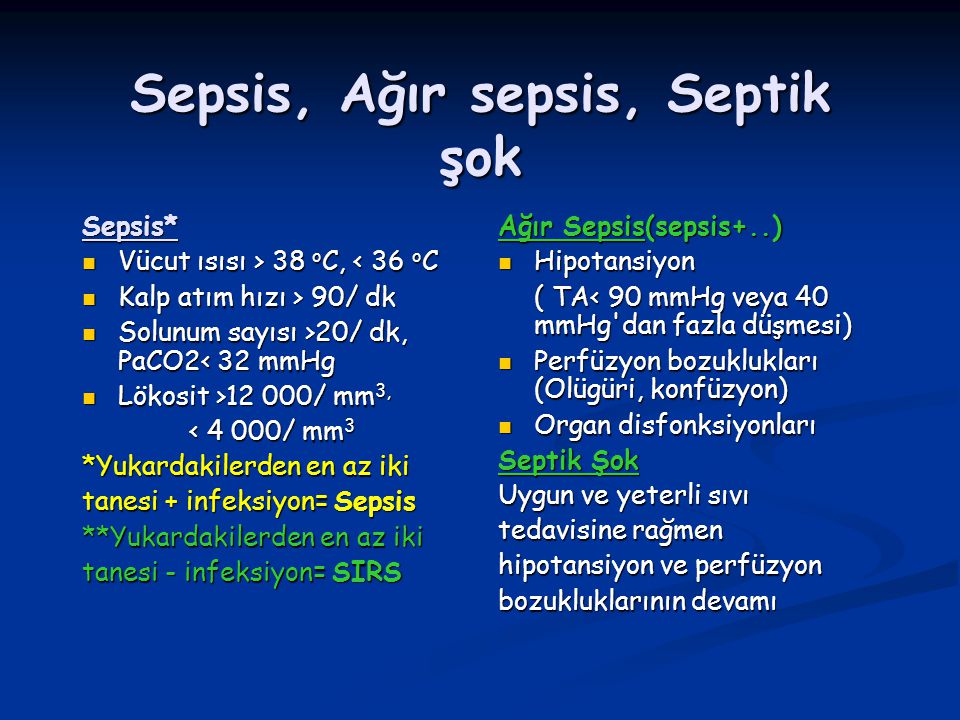
The symptoms of sepsis can vary, but often include:
- Rapid breathing and increased heart rate
- Shortness of breath or difficulty breathing
- Confusion or disorientation
- Extreme pain or discomfort
- Fever, accompanied by shivering or feeling very cold
- Clammy or sweaty skin
If you suspect sepsis or notice that an existing infection is worsening, it’s critical to seek medical attention immediately. The earlier sepsis is diagnosed and treated, the better the chances of recovery.
Diagnostic Approaches for Sepsis
Diagnosing sepsis can be challenging, as many of its symptoms overlap with other medical conditions. How do healthcare providers diagnose sepsis?
Doctors use a combination of methods to diagnose sepsis:
- Medical history review and symptom assessment
- Physical examination, including vital signs check
- Laboratory tests to detect signs of infection or organ damage
- Imaging studies (e.g., X-rays, CT scans) to locate the source of infection
Blood tests are particularly important in diagnosing sepsis. They can reveal:
- Elevated white blood cell count, indicating infection
- High levels of lactate, suggesting organ stress
- Abnormal kidney or liver function tests
- Presence of bacteria in the blood (bacteremia)
Treatment Strategies for Sepsis
Sepsis is a medical emergency that requires prompt and aggressive treatment. What are the main components of sepsis treatment?
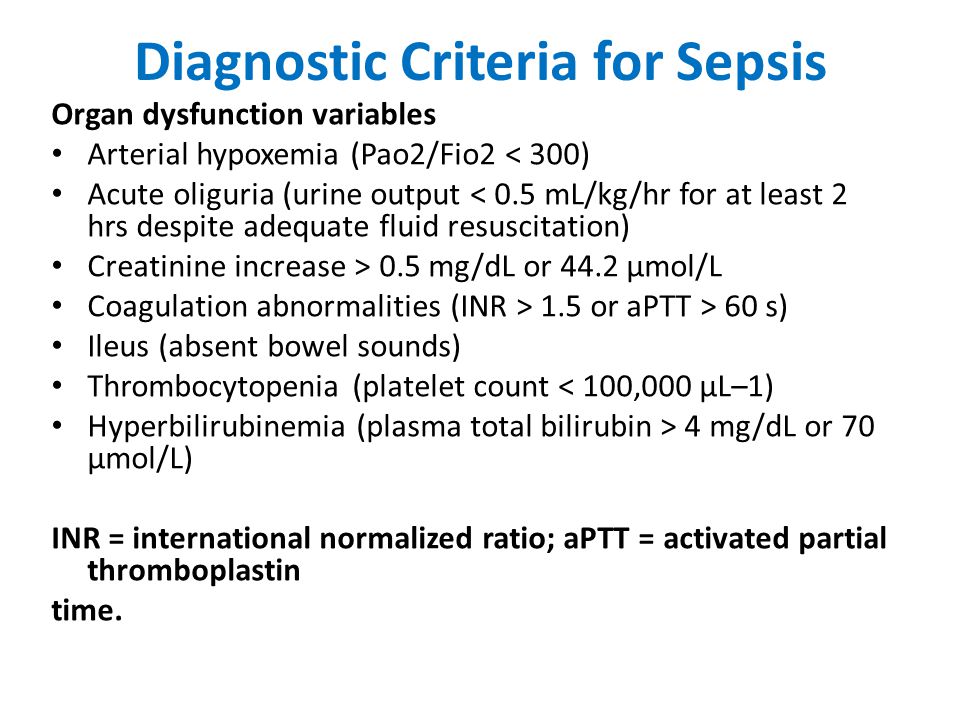
The primary goals of sepsis treatment are to:
- Eliminate the underlying infection
- Support organ function
- Prevent further complications
Treatment typically involves:
- Broad-spectrum antibiotics to fight the infection
- Intravenous fluids to maintain blood pressure and organ function
- Oxygen therapy to support breathing
- Medications to increase blood pressure if necessary
- Treating the source of infection (e.g., draining an abscess)
In severe cases, additional interventions may be required:
- Mechanical ventilation to assist breathing
- Kidney dialysis for acute kidney failure
- Surgery to remove infected or damaged tissue
The key to successful treatment is early intervention. The sooner sepsis is recognized and treated, the better the chances of recovery.
Preventing Sepsis: Strategies for Reducing Risk
While it’s not always possible to prevent sepsis, there are steps you can take to reduce your risk. How can you protect yourself and your loved ones from sepsis?
Here are some key strategies for sepsis prevention:
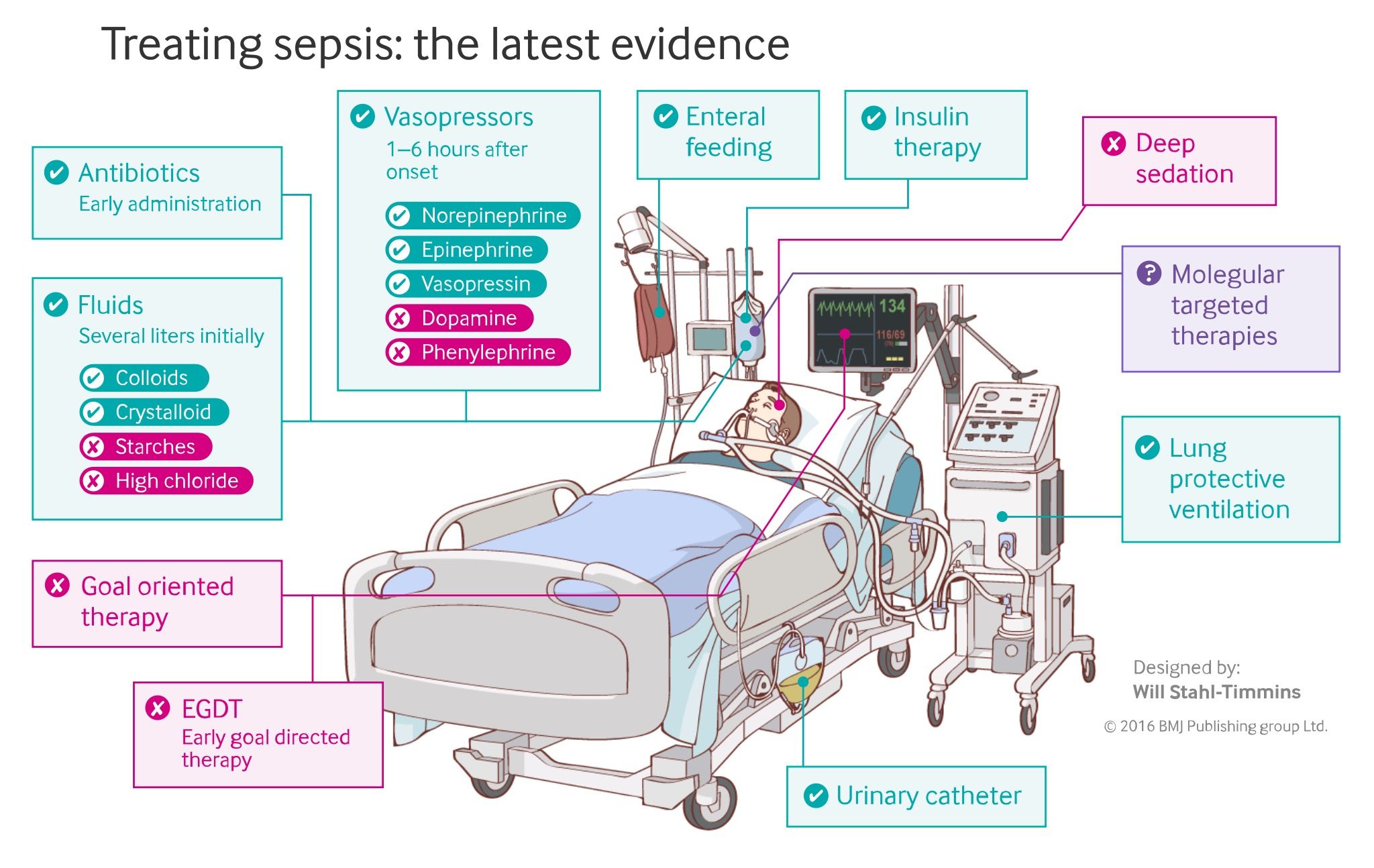
- Practice good hygiene, especially handwashing
- Keep wounds clean and covered until healed
- Stay up-to-date with recommended vaccinations
- Manage chronic health conditions effectively
- Seek prompt medical attention for infections
For healthcare providers, adhering to infection control protocols is crucial in preventing healthcare-associated infections that can lead to sepsis.
The Importance of Vaccination in Sepsis Prevention
Vaccines play a significant role in preventing infections that can lead to sepsis. Which vaccines are particularly important for sepsis prevention?
- Pneumococcal vaccine
- Influenza vaccine
- Meningococcal vaccine
- Haemophilus influenzae type b (Hib) vaccine
These vaccines can help prevent infections that are common causes of sepsis, especially in vulnerable populations such as young children and older adults.
Long-Term Effects and Recovery from Sepsis
Surviving sepsis is a significant achievement, but the journey doesn’t end there. What are the potential long-term effects of sepsis, and what does recovery look like?
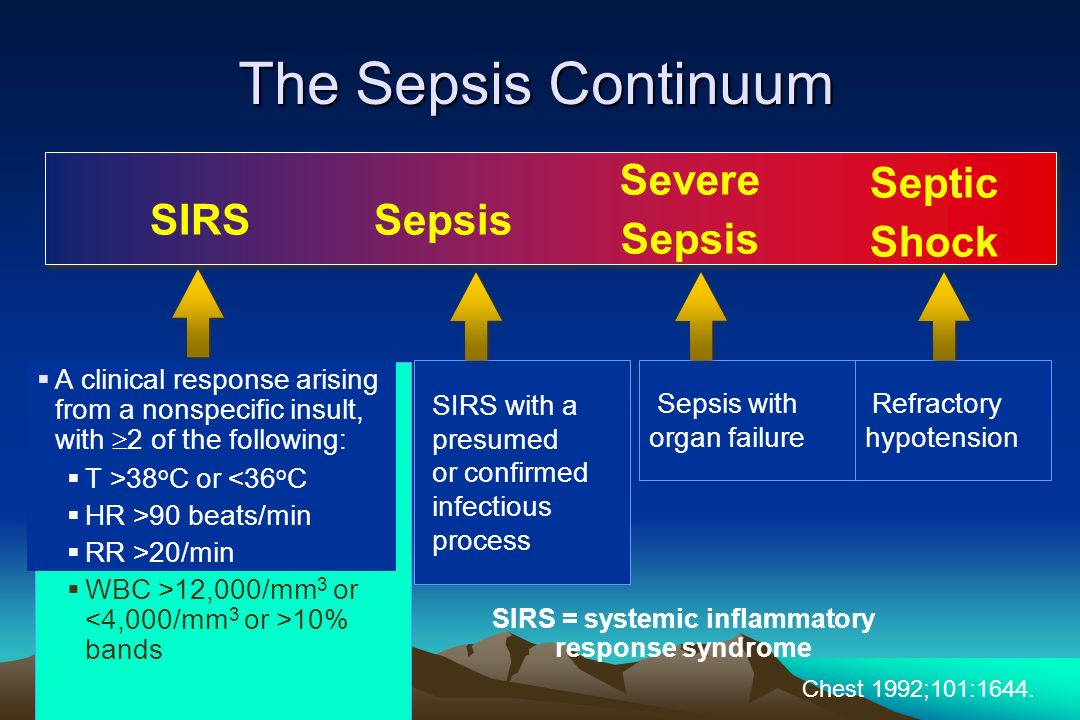
Many sepsis survivors experience lingering effects, a condition known as post-sepsis syndrome. These effects can include:
- Fatigue and weakness
- Cognitive impairment or “brain fog”
- Anxiety and depression
- Muscle and joint pain
- Increased susceptibility to infections
- Organ dysfunction
Recovery from sepsis can be a long and challenging process. It often involves:
- Physical therapy to regain strength and mobility
- Occupational therapy to relearn daily living skills
- Cognitive rehabilitation for memory and concentration issues
- Psychological support to address emotional challenges
- Ongoing medical care to manage any persistent health issues
The duration and extent of recovery can vary greatly among individuals, depending on factors such as the severity of sepsis, pre-existing health conditions, and the timeliness of treatment.
Advancing Sepsis Research and Awareness
Despite the severity and prevalence of sepsis, public awareness remains low. How is the medical community working to improve sepsis outcomes and increase public understanding?

Efforts to combat sepsis are multifaceted and include:
- Ongoing research into new diagnostic tools and treatments
- Development of standardized protocols for early sepsis recognition and management
- Public awareness campaigns to educate about sepsis signs and symptoms
- Improved training for healthcare providers in sepsis identification and treatment
- Policy initiatives to prioritize sepsis as a public health concern
Organizations like the Sepsis Alliance and the Global Sepsis Alliance play crucial roles in these efforts, working to reduce sepsis incidence and improve outcomes worldwide.
The Role of Technology in Sepsis Management
Advancements in technology are opening new avenues for sepsis management. How is technology being leveraged to improve sepsis care?
Innovative approaches include:
- AI-powered early warning systems to identify at-risk patients
- Rapid diagnostic tests for quicker pathogen identification
- Wearable devices for continuous patient monitoring
- Electronic health record integration for improved sepsis protocol compliance
- Telemedicine platforms for remote sepsis consultation and management
These technological advancements hold promise for enhancing early detection and treatment of sepsis, potentially saving countless lives.

In conclusion, sepsis remains a significant global health challenge, but increased awareness, improved treatment protocols, and ongoing research offer hope for better outcomes. By understanding the causes, recognizing the symptoms, and taking preventive measures, we can all play a role in reducing the impact of this life-threatening condition.
Sepsis: MedlinePlus
What is sepsis?
Sepsis is your body’s overactive and extreme response to an infection. Sepsis is a life-threatening medical emergency. Without quick treatment, it can lead to tissue damage, organ failure, and even death.
What causes sepsis?
Sepsis happens when an infection you already have triggers a chain reaction throughout your body. Bacterial infections are the most common cause, but other types of infections can also cause it.
The infections are often in the lungs, stomach, kidneys, or bladder. It’s possible for sepsis to begin with a small cut that gets infected or with an infection that develops after surgery. Sometimes, sepsis can occur in people who didn’t even know that they had an infection.
Who is at risk for sepsis?
Anyone with an infection could get sepsis. But certain people are at higher risk:
What are the symptoms of sepsis?
Sepsis can cause one or more of these symptoms:
- Rapid breathing and heart rate
- Shortness of breath
- Confusion or disorientation
- Extreme pain or discomfort
- Fever, shivering, or feeling very cold
- Clammy or sweaty skin
It’s important to get medical care right away if you think you might have sepsis or if your infection is not getting better or is getting worse.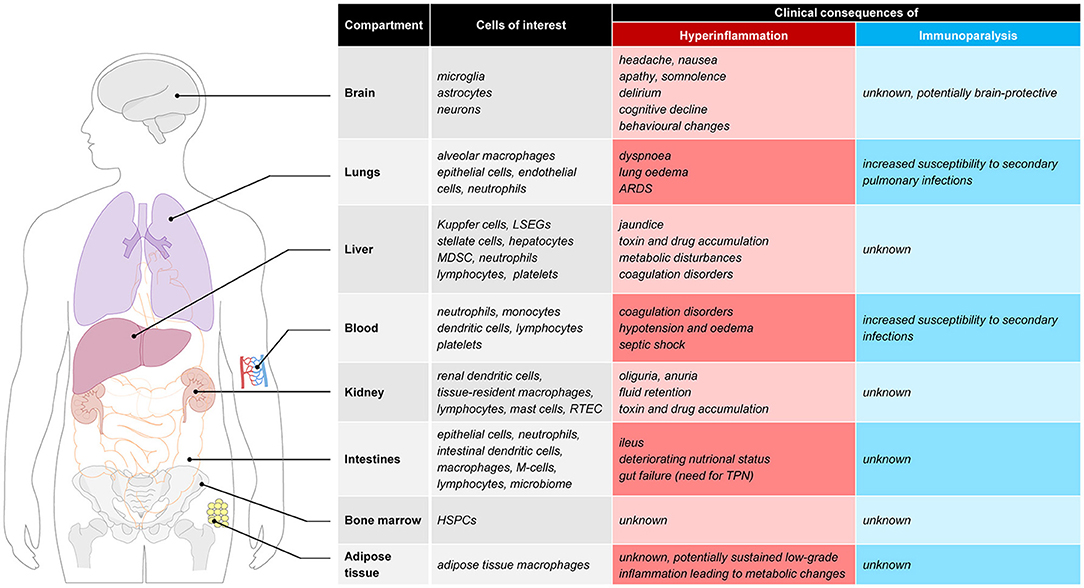
What other problems can sepsis cause?
Severe cases of sepsis can lead to septic shock, where your blood pressure drops to a dangerous level and multiple organs can fail.
How is sepsis diagnosed?
Your health care provider may use many tools to make a diagnosis
- A medical history, which includes asking about your symptoms
- A physical exam, including checking vital signs (your temperature, blood pressure, heart rate, and breathing)
- Lab tests that check for signs of infection or organ damage
- Imaging tests such as an x-ray or a CT scan to find the location of the infection
Many of the signs and symptoms of sepsis can also be caused by other medical conditions. This may make sepsis hard to diagnose in its early stages.
What are the treatments for sepsis?
It is very important to get treatment right away. Treatment usually includes
- Antibiotics
- Maintaining blood flow to organs.
 This may involve getting oxygen and intravenous (IV) fluids.
This may involve getting oxygen and intravenous (IV) fluids. - Treating the source of the infection
- If needed, medicines to increase blood pressure
In serious cases, you might need kidney dialysis or a breathing tube. Some people need surgery to remove tissue damaged by the infection.
Can sepsis be prevented?
To prevent sepsis, you should try to prevent getting an infection:
- Take good care of any chronic health conditions that you have
- Get recommended vaccines
- Practice good hygiene, such as handwashing
- Keep cuts clean and covered until healed
NIH: National Institute of General Medical SciencesCenters for Disease Control and Prevention
Sepsis | Cedars-Sinai
Not what you’re looking for?
What is sepsis?
Sepsis is a serious condition that
can result in organ damage or death. It happens when the body’s immune system has a
severe response to an infection. Sepsis is a medical emergency. It needs to be treated
Sepsis is a medical emergency. It needs to be treated
right away.
Bacteria, viruses, and fungi can invade your body and cause disease. When your body senses one of these, the immune system responds. Your body releases certain chemicals into the blood that can help fight infection.
In some cases, the body has an
abnormal and severe response to infection. This can cause inflammation around the body
and damage your body’s cells. Blood clots may start to form all over the body. Some
blood vessels may start to leak. Blood flow and blood pressure may start to drop. This
harms the body’s organs by stopping oxygen and nutrients from reaching them. If this
process isn’t stopped, organs in the body can stop working. This can lead to death.
The term sepsis is used to define
any condition in which the body’s organs stop working right and there is an infection.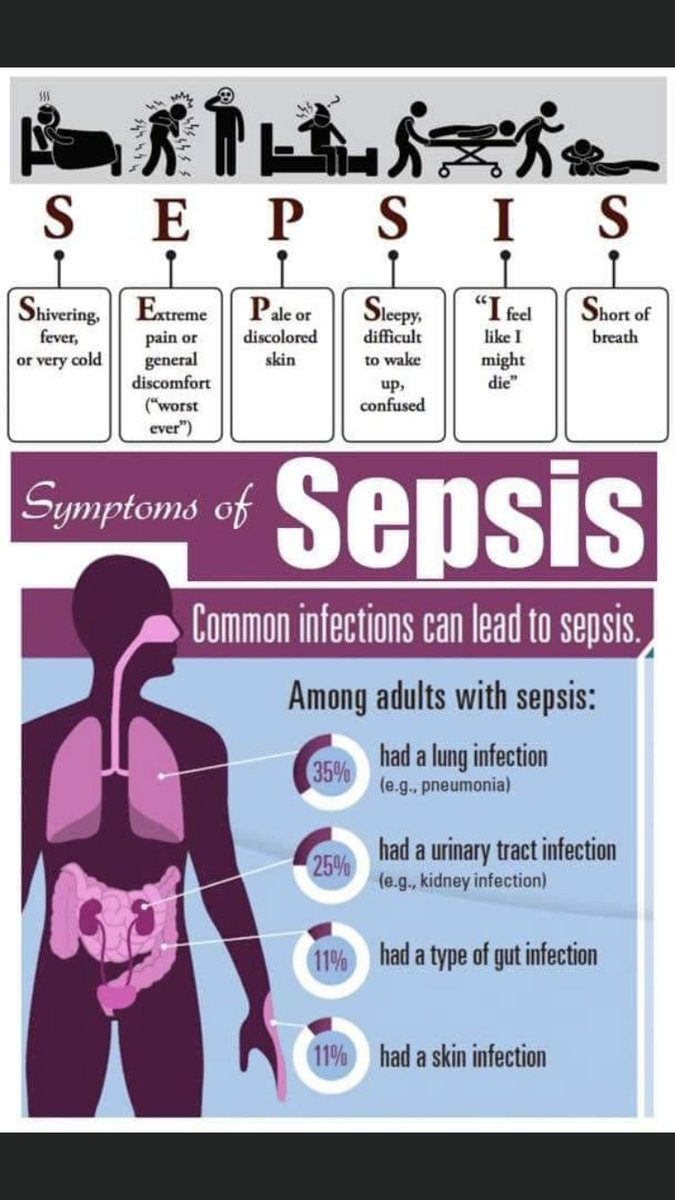
Septic shock is when sepsis occurs along with changes to the circulatory, cellular, and
metabolic systems.
Sepsis is a common cause of death
in hospital intensive care units. It can affect people of all ages. But children and
older adults are at highest risk.
What causes sepsis?
Sepsis never happens on its own. It always starts with an infection somewhere in your body, such as:
- Lung infection
- Urinary tract infection
- Skin infection
- Abdominal infection such as from
appendicitis or an infected gallbladder
Bacteria are the most common cause
of these infections. Viruses, parasites, and fungi can also cause them and lead to
sepsis. In some cases, the bacteria enter the body through a medical device such as a
blood vessel or urinary catheter. An infection that spreads around the body through the
An infection that spreads around the body through the
bloodstream is more likely to cause sepsis. An infection in just one part of the body is
less likely to lead to sepsis.
Sepsis is sometimes called by the
nonmedical term blood poisoning. But this is misleading. Sepsis isn’t caused by
poison.
Who is at risk for sepsis?
Some health problems and other
conditions that affect your ability to fight infection can raise your risk for sepsis.
These include:
- HIV/AIDS
- Diabetes
- Cancer
- Liver disease
- Severe burns
- Respiratory failure
- Alcoholism
- Other conditions that affect the
immune system
Babies, children, and older adults also have a higher risk of
developing sepsis.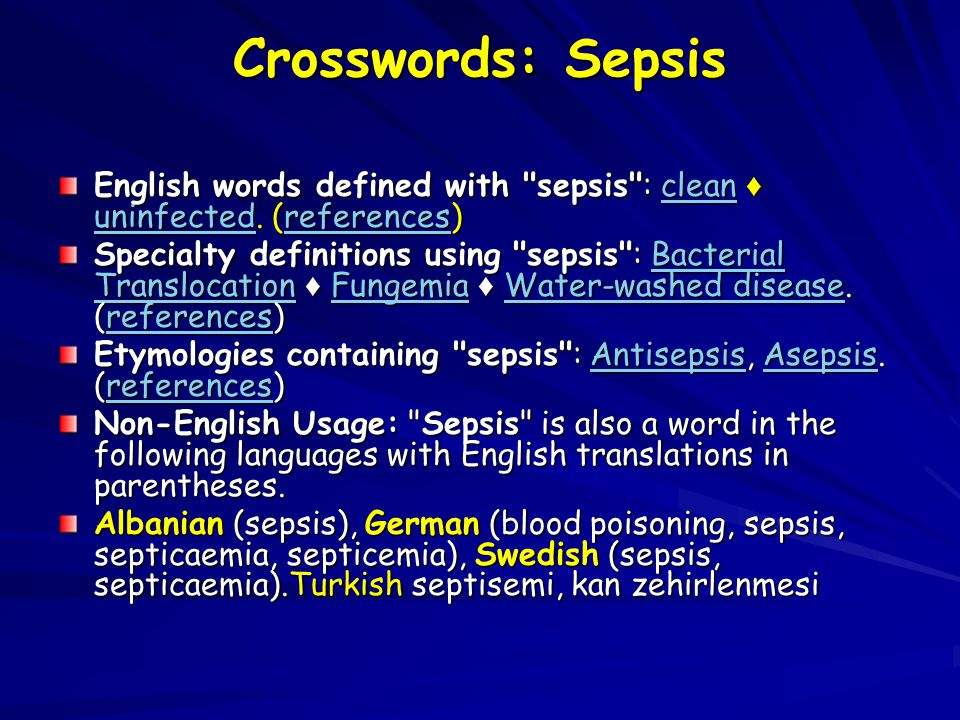
Careful treatment of these health conditions may help reduce the risk of sepsis.
What are the symptoms of sepsis?
Symptoms and signs of sepsis can include:
- Fever or abnormally low temperature
- Chills
- Rash
- Confusion
- Trouble breathing
- Swelling
- Rapid heart rate and breathing rate
- Low blood pressure
- Signs of reduced blood flow to one or more organs
- Less urine
The symptoms may vary depending on the severity of the sepsis. These symptoms may be mild at first and then quickly get worse.
How is sepsis diagnosed?
To diagnose sepsis, a healthcare
provider will ask about your medical history and your symptoms.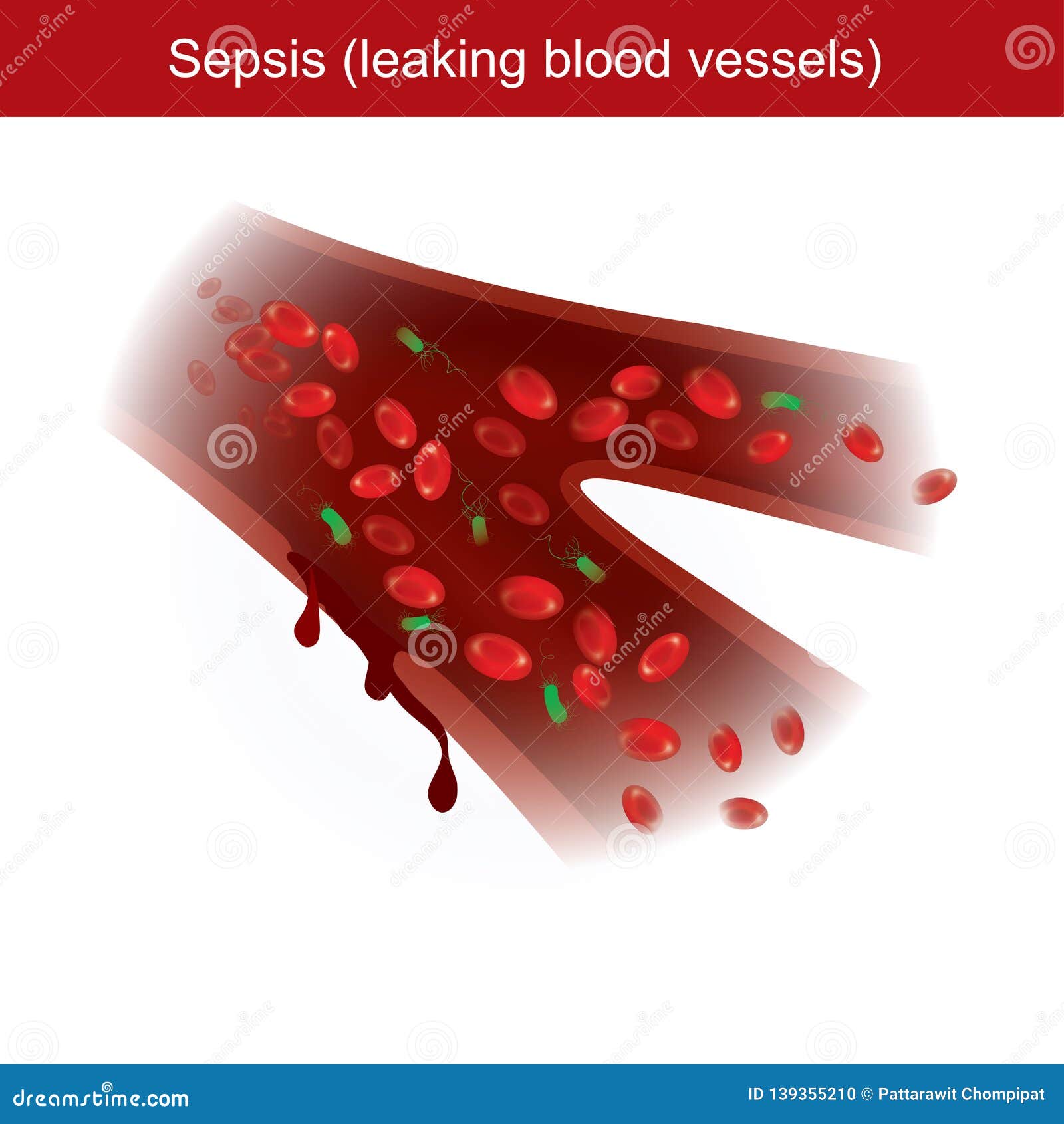 Some of the symptoms of
Some of the symptoms of
early sepsis are the same as other health problems. This can make sepsis hard to
diagnose in its early stages. A full exam of the body is needed to help diagnose
sepsis.
You may also have tests, such as:
- Urine tests to look for signs of infection in your urine, and check kidney function
- Blood tests to looks for signs of infection in your blood
- Imaging tests such as a chest X-ray,
CT scan, or other tests to look for the site of infection
A healthcare provider will often
suspect sepsis in a person with certain signs and symptoms. These include an abnormal
body temperature, rapid heart and breathing rate, and abnormal white blood cell count. A
healthcare provider can make an official diagnosis when there is a source of infection
and abnormal signs and symptoms point to organ problems. Septic shock is diagnosed when
Septic shock is diagnosed when
the signs of organ dysfunction do not get better with treatment.
How is sepsis treated?
Treatment is done in a hospital’s
intensive care unit (ICU). This is because sepsis treatment needs very close monitoring.
Vital signs such as heart rate, blood pressure, and breathing will be constantly
watched. Blood and urine tests will be done often. Your condition will be closely
watched and your treatment adjusted as often as needed.
The source of the sepsis must be
treated. At first, you will often be treated with one or more antibiotics that work on
many types of bacteria. Results of culture and sensitivity testing can identify a
specific type of bacteria and the appropriate antibiotic. Pockets of infection may need
to be drained. These are called abscesses. In some cases, an infected part of the body
may need to be removed with surgery.
Along with antibiotic treatment,
you will also need other types of treatments to help support the body, such as:
- Extra oxygen, to keep up normal oxygen levels
- IV (intravenous) fluids, to help bring
blood pressure and blood flow to organs back to normal - A breathing tube and a ventilator, if
you have trouble breathing - Dialysis, in case of kidney failure
- Medicines to raise the blood
pressure - Other treatments to prevent problems such as deep vein thrombosis and pressure ulcers
- Insulin to keep blood sugars in the
optimal range, even in you don’t have a history of diabetes
Most people with mild sepsis do get
better. But even with intense treatment, some people die from sepsis. Up to half of all
people with severe sepsis will die from it.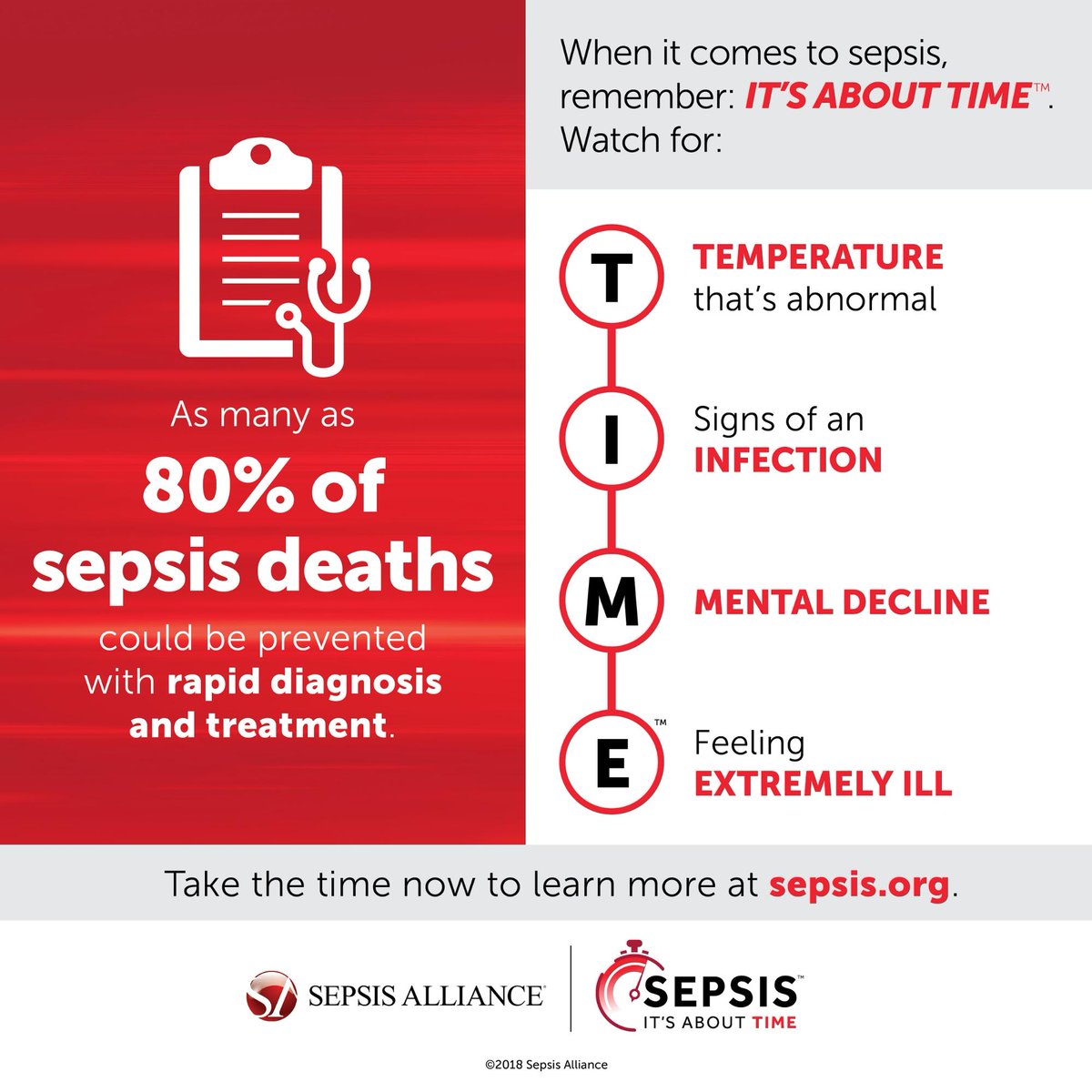
What are possible complications of sepsis?
Many people survive sepsis without
any lasting problems. Other people may have serious problems from sepsis, such as organ
damage. Some possible complications of sepsis are:
- Kidney failure
- Tissue death (gangrene) of fingers or toes that may require amputation
- Permanent lung damage from acute respiratory distress syndrome
- Permanent brain damage, which can cause memory problems or more severe symptoms
- Later problems with your immune
system, which can raise the risk for future infections - Damage to the heart valves
(endocarditis), which can lead to heart failure
When should I call my healthcare provider?
Seek care right away if you or
someone else has symptoms of sepsis.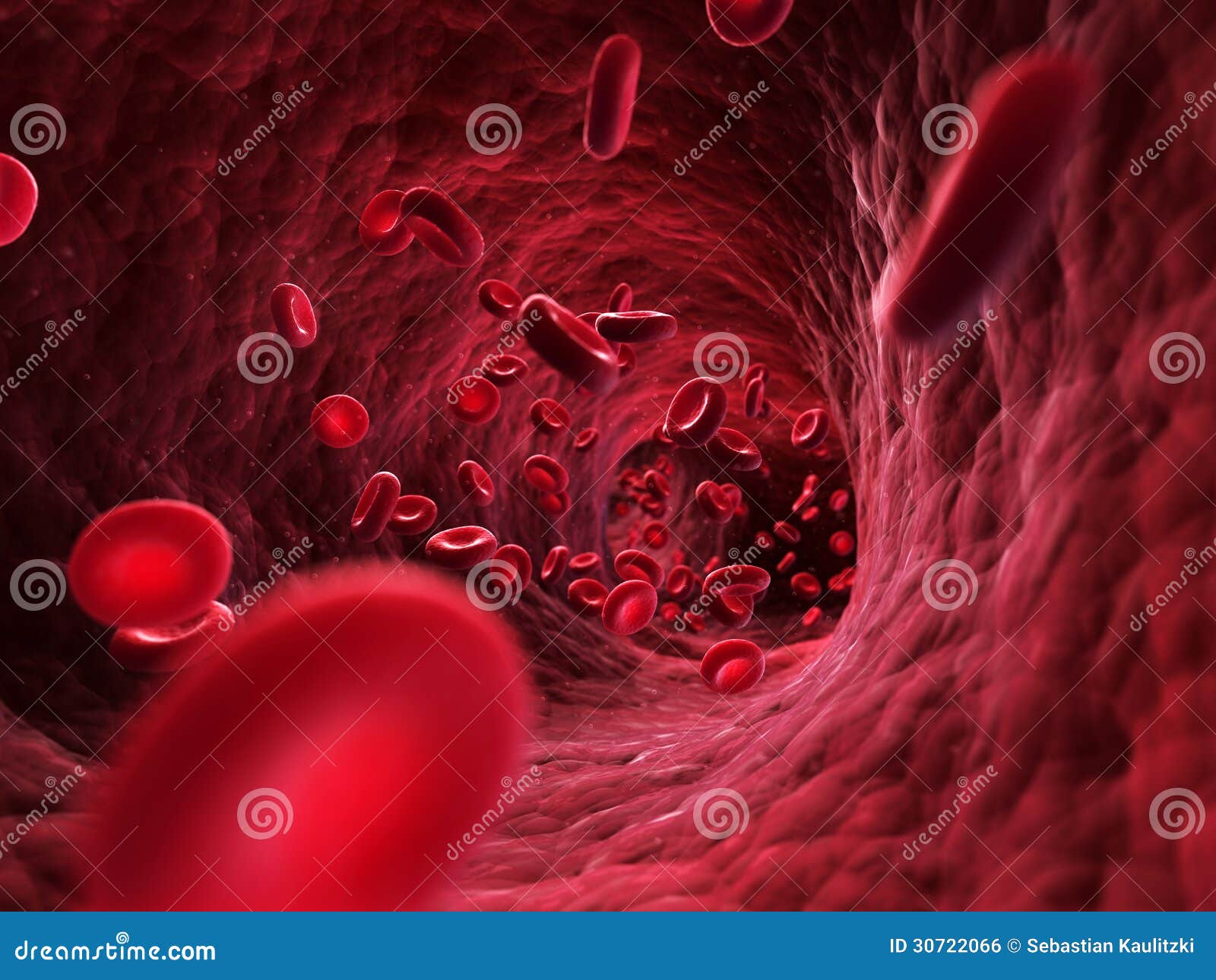 Early diagnosis and treatment can help improve the
Early diagnosis and treatment can help improve the
chances of a good recovery. After recovery, you may be more prone to infections and
other illnesses. Call or see your healthcare provider right away at the first signs of
an infection or illness.
Key points about sepsis
Sepsis is a serious medical condition that can result in organ damage or death. It happens when the body’s immune system has a severe response to an infection.
- Sepsis is a medical emergency. It
needs to be treated right away. - Possible signs and symptoms of sepsis
include fever, confusion, trouble breathing, rapid heart rate, and very low blood
pressure. - Sepsis is treated with antibiotics, oxygen, and IV fluids as
soon as possible. Other treatments such as kidney dialysis, breathing support, or
surgery may also be needed.
- Sepsis can cause serious
complications. These include kidney failure, gangrene, and death.
Next steps
Tips to help you get the most from a visit to your healthcare provider:
- Know the reason for your visit and what you want to happen.
- Before your visit, write down questions you want answered.
- Bring someone with you to help you ask questions and remember what your provider tells you.
- At the visit, write down the name of a new diagnosis, and any new medicines, treatments, or tests. Also write down any new instructions your provider gives you.
- Know why a new medicine or treatment is prescribed, and how it will help you. Also know what the side effects are.
- Ask if your condition can be treated in other ways.
- Know why a test or procedure is recommended and what the results could mean.

- Know what to expect if you do not take the medicine or have the test or procedure.
- If you have a follow-up appointment, write down the date, time, and purpose for that visit.
- Know how you can contact your provider if you have questions.
Medical Reviewer: Barry Zingman MD
Medical Reviewer: Rita Sather RN
Medical Reviewer: L Renee Watson MSN RN
© 2000-2021 The StayWell Company, LLC. All rights reserved. This information is not intended as a substitute for professional medical care. Always follow your healthcare professional’s instructions.
Not what you’re looking for?
Sepsis | NHS inform
Treatment for sepsis varies, depending on the site and cause of the initial infection, the organs affected and the extent of any damage.
You’ll usually be referred to hospital for diagnosis and treatment if you have possible early signs of sepsis.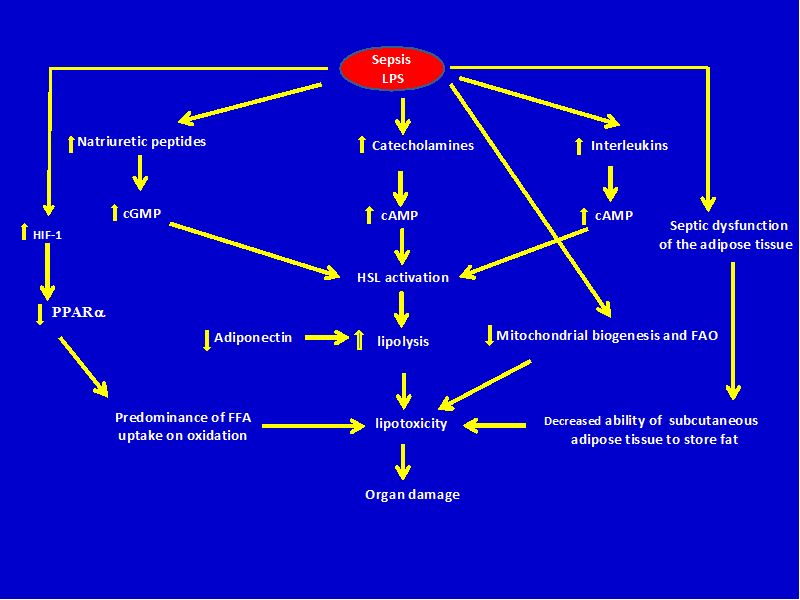 Severe sepsis and septic shock are medical emergencies.
Severe sepsis and septic shock are medical emergencies.
Management of sepsis after admission to hospital usually involves three treatments and three tests, known as the “sepsis six”. These should be initiated by the medical team within an hour of diagnosis.
Treatment involves:
- giving antibiotics – if the sepsis is detected early enough, this may be a course of tablets you can finish taking at home
- giving fluids intravenously
- giving oxygen if levels are low
These treatments are described in more detail on this page.
Tests will include:
- taking blood cultures – to identify the type of bacteria causing sepsis
- taking a blood sample – to assess the severity of sepsis
- monitoring your urine output – to assess severity and kidney function
Emergency treatment
Antibiotics
Viral infections
Intravenous fluids
Oxygen
Treating the source of infection
Increasing blood pressure
Other treatments
Emergency treatment
You’ll need emergency hospital treatment and may require admission to an intensive care unit (ICU) if:
- the sepsis is severe
- you develop septic shock – when your blood pressure drops to a dangerously low level
ICUs are able to support any affected body functions, such as breathing or blood circulation, while the medical staff focus on treating the infection.
Because of problems with vital organs, people with severe sepsis are likely to be very ill. Up to 4 in every 10 people with the condition will die.
Septic shock is even more serious, with an estimated 6 in every 10 cases proving fatal.
However, sepsis is treatable if it is identified and treated quickly, and in most cases leads to full recovery with no lasting problems.
Antibiotics
The main treatment for sepsis, severe sepsis or septic shock is antibiotics.
If you have severe sepsis and septic shock, antibiotics will be given directly into a vein (intravenously).
Ideally, antibiotic treatment should start within an hour of diagnosis to reduce the risk of serious complications or death.
Intravenous antibiotics are usually replaced by tablets after two to four days. You may have to take them for 7 to 10 days or longer, depending on the severity of your condition.
Types of antibiotics
There won’t usually be time to wait until a specific type of infection has been identified, so broad-spectrum antibiotics are given first.
These are designed to work against a wide range of known infectious bacteria and usually cure most common infections.
Once a specific bacterium has been identified, a more focused antibiotic can be used.
Viral infections
If the sepsis is caused by a virus, antibiotics won’t work. Antibiotics are usually given anyway because it would be too dangerous to delay treatment until tests confirm the specific cause.
With a viral infection, you’ll need to wait until your immune system starts to tackle the infection, although antiviral medication may be given in some cases.
Intravenous fluids
If you have sepsis, your body needs increased amounts of fluid to prevent dehydration and kidney failure.
You’ll usually be given fluids intravenously during the first 24 to 48 hours after admission if you have severe sepsis or septic shock.
It’s important that the doctors know how much urine your kidneys are making when you have sepsis so they can spot signs of kidney failure.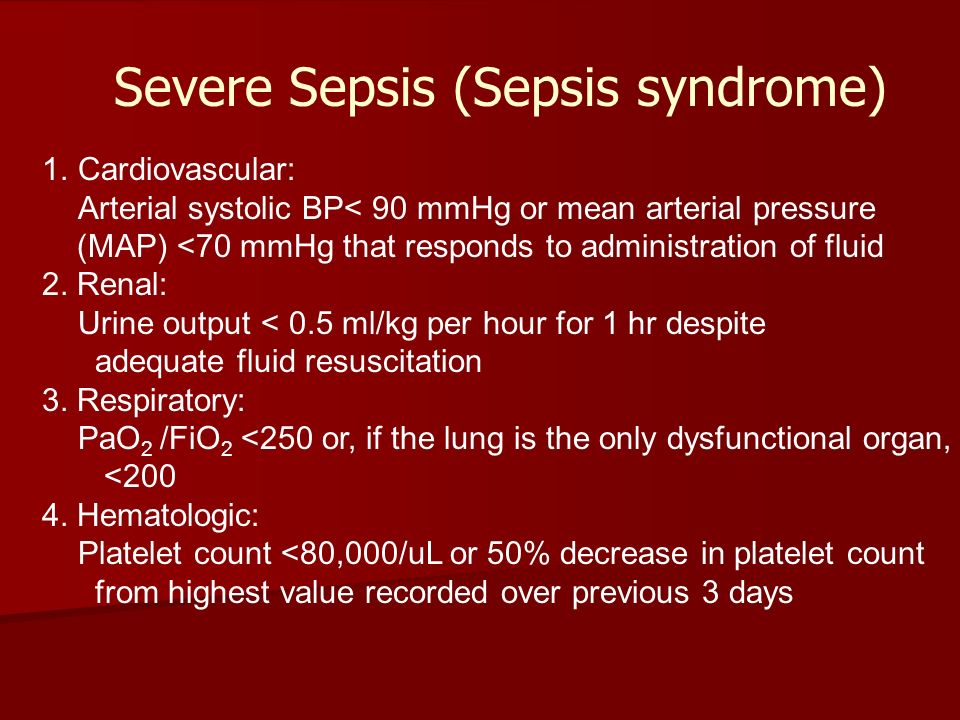
If you’re admitted with severe sepsis or septic shock, you’ll usually have a catheter inserted into your bladder to monitor your urine output.
Oxygen
Your body’s oxygen demand goes up if you have sepsis.
If you’re admitted to hospital with sepsis and the level of oxygen in your blood is low, you’ll usually be given oxygen. This is either given through a mask or tubes in your nostrils.
Treating the source of infection
If a source of the infection can be identified, such as an abscess or infected wound, this will also need to be treated.
For example, any pus may need to be drained away or, in more serious cases, surgery may be needed to remove the infected tissue and repair any damage.
Increasing blood pressure
Medications called vasopressors are used if you have low blood pressure caused by sepsis.
Vasopressors are normally given intravenously while you’re in an ICU. Extra fluids may also be given intravenously to help increase blood pressure.
Other treatments
You may also require additional treatments, such as:
- corticosteroids or insulin medication
- a blood transfusion
- mechanical ventilation – where a machine is used to help you breathe
- dialysis – where a machine filters your blood to copy the function of your kidneys
These treatments are mostly used in ICUs.
Sepsis (for Parents) – Nemours Kidshealth
What Is Sepsis?
Sepsis is a medical emergency that needs treatment right away. When the body gets an infection, the immune system fights it. Sepsis happens when the immune system goes into overdrive and attacks the body’s own organs and tissues. This can happen when fighting any kind of infection.
Sepsis can damage the kidneys, lungs, brain, and heart, and can even cause death. By knowing the signs of sepsis, parents can get their children medical attention early, which can help in the treatment.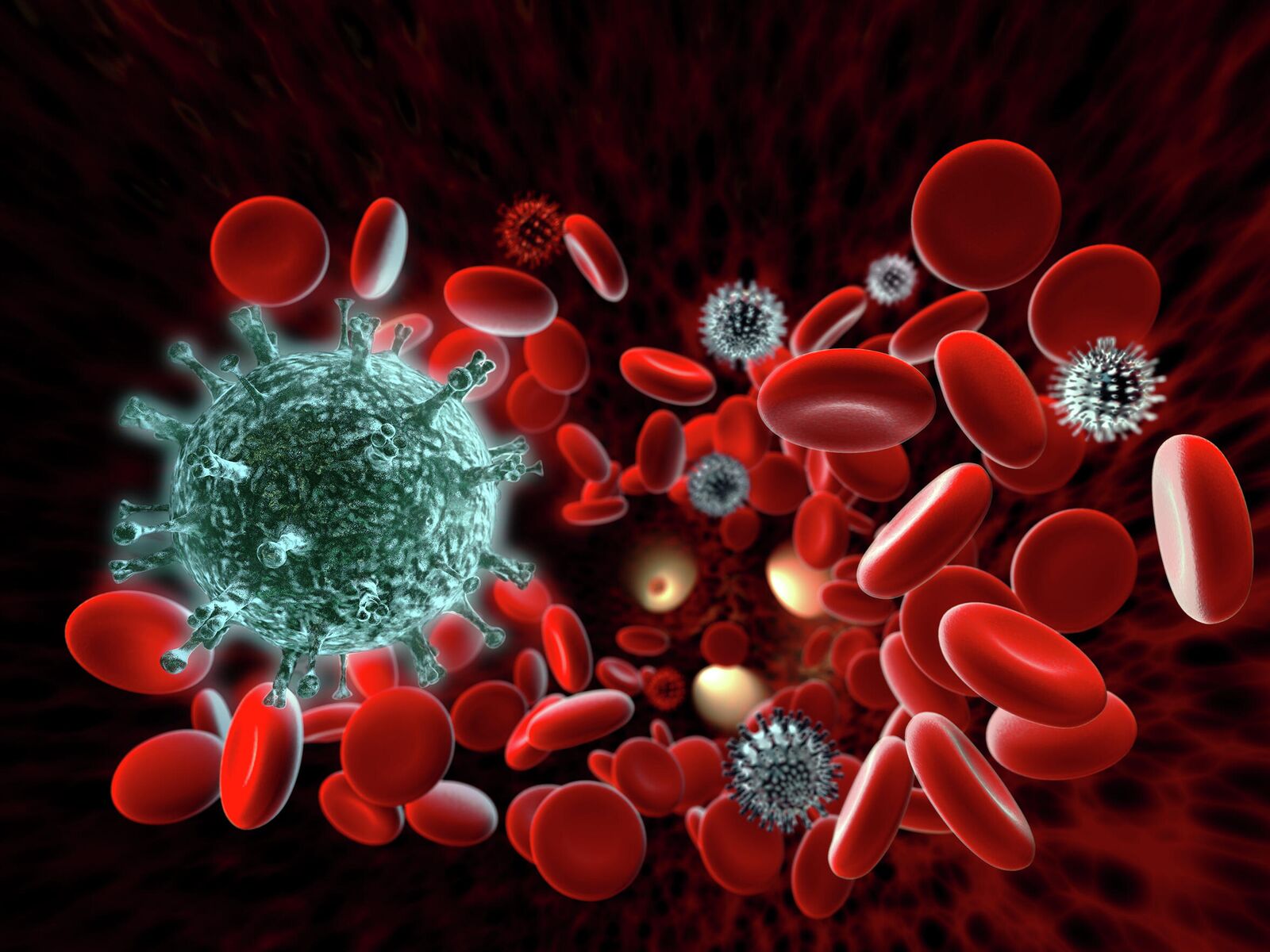
Top Things to Know About Sepsis:
- Sepsis is a medical emergency that needs treatment fast.
- Sepsis happens when the immune system goes into overdrive when fighting an infection and damages the body.
- Protect against sepsis by doing what you can to prevent infections:
- If your child gets sick and is not getting better, call your doctor or get medical care. If your child is prescribed antibiotics, give all doses exactly as directed.
- Trust your instincts and speak up. You know your child best. If your child seems sicker than usual to you, or has an infection that doesn’t get better or gets worse, call the doctor or get medical help right away. Ask the doctor, “Could it be sepsis?”
What Are the Signs & Symptoms of Sepsis?
Sepsis can be very hard to identify. Many of its signs are also common in routine childhood illness. But trust your instincts. If your child seems sicker than usual or something just doesn’t seem right, call the doctor or get emergency medical care immediately.
Having one of these signs alone doesn’t mean a child has sepsis. But when a few of these things happen together, that’s a clue that sepsis is possible:
- fever, shivering, or a very low temperature
- fast breathing
- fast or racing heartbeat, especially if the fever is down
- sweaty or blotchy skin
- extra sleepiness, trouble waking up, or confusion
- complaining of bad pain (babies and very young kids might just cry a lot)
What Causes Sepsis?
Sepsis starts with an infection caused by a germ. Bacteria,
viruses,
fungi, and parasites all can cause sepsis.
When the body has an infection, it makes chemicals to fight it. Usually those chemicals stay in the location of the infection. During sepsis, the chemicals get into the bloodstream and spread, damaging the body’s organs.
Who Gets Sepsis?
Sepsis can affect people of any age. It’s more common in those who have a higher chance of getting an infection in the first place, such as:
- babies under 3 months; this is also called neonatal sepsis
- adults 65 or older
- people with
chronicmedical conditions - people who just had surgery
- those whose immune systems are weakened from conditions such as HIV or cancer
How Is Sepsis Diagnosed?
No specific test can tell for sure that a patient has sepsis.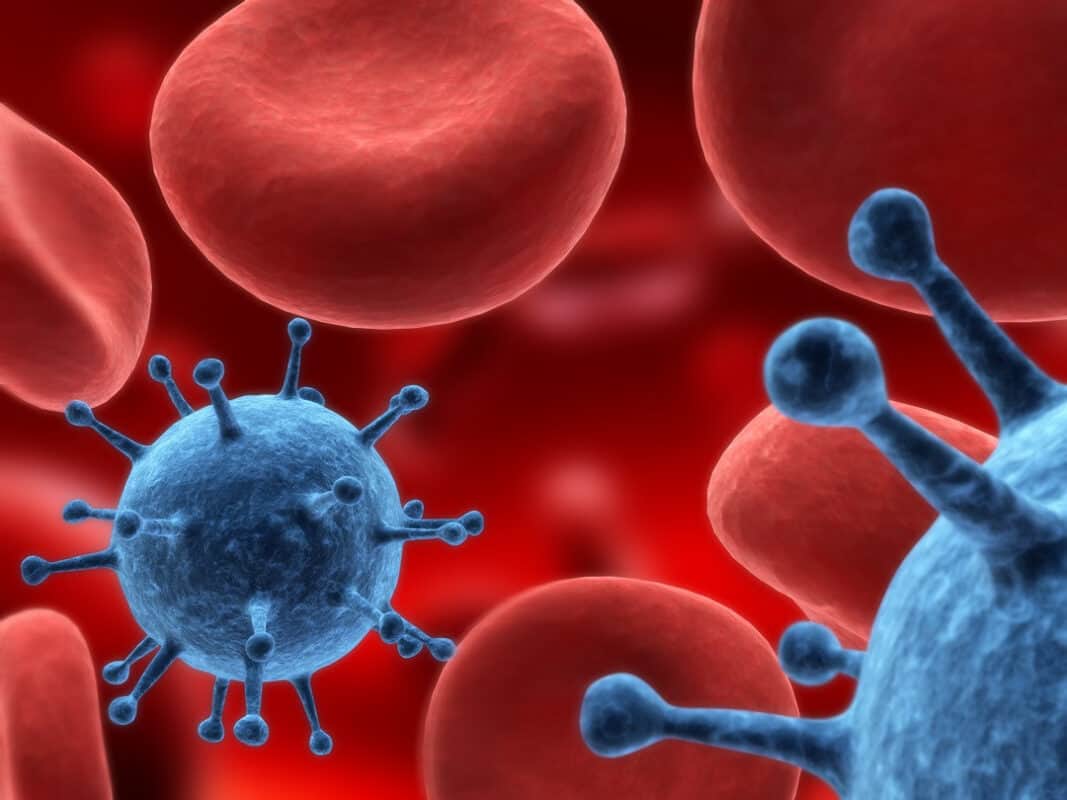 The medical team puts together clues from the patient’s
The medical team puts together clues from the patient’s
medical history, symptoms, a physical exam, and tests to make a sepsis diagnosis.
Tests done can include:
- lab tests, like blood tests or urine (pee) tests
- radiology tests, like X-rays, an ultrasound, or a CT scan
The tests can look for an infection that could be causing sepsis and to check for organ damage.
How Is Sepsis Treated?
Sepsis is treated in the hospital, where doctors can closely watch the patient. Some kids must be in the pediatric intensive care unit (PICU) for extra monitoring and treatment.
Monitors like a cardiorespiratory monitor and pulse oximetry watch the heart and breathing. Doctors watch the child’s blood pressure closely. Sometimes a special monitor, called an arterial line (or a-line for short), measures blood pressure constantly from inside the arteries.
Antibiotics to fight the infection are given through an
intravenous(IV) line, which is a small tube put into a vein. Usually, doctors start
Usually, doctors start
antibioticsright away — even before the diagnosis of sepsis is proven.
Kids also will get fluids through the IV and, if needed, blood pressure medicines called vasopressors to keep the heart working well. Some kids with sepsis might need extra blood or to get some parts of blood through the IV. This is called a transfusion and can help the blood make clots or carry oxygen better.
Sometimes, a child needs a special IV called a central line. This bigger IV line goes into a larger vein that can carry the needed medicines and fluids faster.
Kids with sepsis could need help breathing. If so, doctors give oxygen or might place a breathing tube and use a ventilator (a machine that helps with breathing). If the heart and lungs are too sick to get enough oxygen to the body, the medical team may use a treatment called ECMO where a machine takes over for the heart and lungs so the body can heal.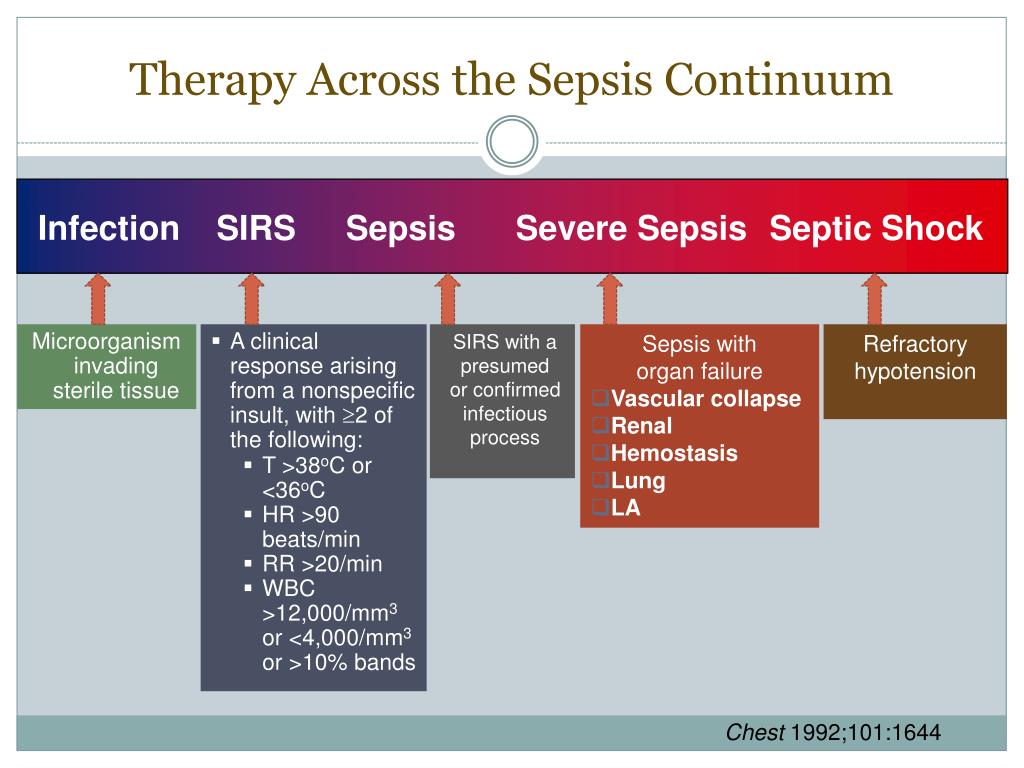
Kids with sepsis might have kidney damage and stop making urine (pee). Doctors use
dialysis to clean the blood when the kidneys can’t do that.
What Else Should I Know?
It’s not always possible to prevent sepsis. But preventing infections can help lower the chances of sepsis.
Here are four ways you can help protect your kids from infection:
- Get your kids immunized on the recommended schedule. Routine vaccines help prevent bacteria and viruses from causing infections that can lead to sepsis.
- Encourage regular hand washing.
- Clean any cuts or scrapes well. Keep a close eye on them to be sure they’re healing as expected.
- If your child has a medical device (like a
catheteror long-term IV line), follow the doctor’s directions for cleaning and using it.
If your child is sick and is not getting better, call your doctor or get medical care. If your child is prescribed antibiotics, give all doses exactly as directed.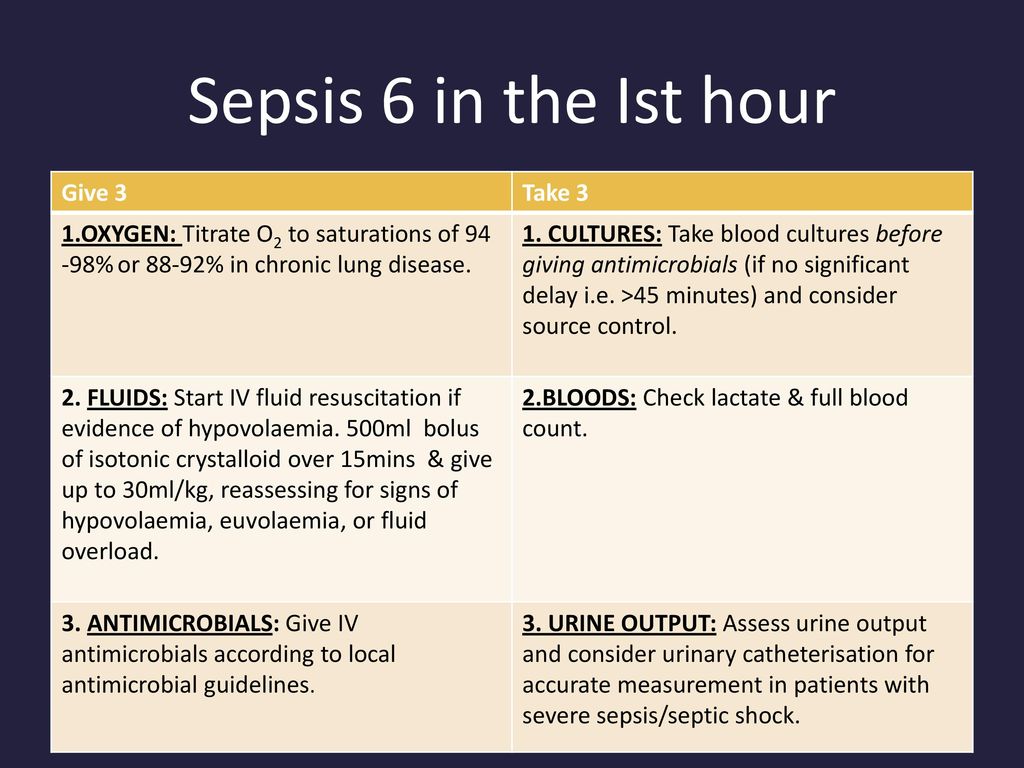
Most important: If your child seems sicker than normal to you, or is being treated for an infection that’s not getting better or gets worse, trust your gut and call the doctor or get medical help right away. Ask the doctor, “Could it be sepsis?”
%PDF-1.4
%
345 0 obj
>
endobj
xref
345 79
0000000016 00000 n
0000002503 00000 n
0000002662 00000 n
0000003311 00000 n
0000003354 00000 n
0000003507 00000 n
0000003661 00000 n
0000003814 00000 n
0000004067 00000 n
0000004579 00000 n
0000005036 00000 n
0000005489 00000 n
0000005750 00000 n
0000005800 00000 n
0000005964 00000 n
0000006015 00000 n
0000006129 00000 n
0000006634 00000 n
0000025486 00000 n
0000025617 00000 n
0000026133 00000 n
0000026380 00000 n
0000026407 00000 n
0000026712 00000 n
0000026824 00000 n
0000027324 00000 n
0000027693 00000 n
0000027833 00000 n
0000028462 00000 n
0000028489 00000 n
0000045624 00000 n
0000062568 00000 n
0000077828 00000 n
0000093377 00000 n
0000113988 00000 n
0000132670 00000 n
0000151150 00000 n
0000151669 00000 n
0000164235 00000 n
0000164496 00000 n
0000176996 00000 n
0000188141 00000 n
0000188253 00000 n
0000188323 00000 n
0000199702 00000 n
0000199878 00000 n
0000200125 00000 n
0000202541 00000 n
0000202610 00000 n
0000202694 00000 n
0000202773 00000 n
0000202843 00000 n
0000202922 00000 n
0000203039 00000 n
0000203526 00000 n
0000204834 00000 n
0000205138 00000 n
0000205497 00000 n
0000214621 00000 n
0000214660 00000 n
0000223185 00000 n
0000223224 00000 n
0000223587 00000 n
0000223949 00000 n
0000224335 00000 n
0000224481 00000 n
0000224630 00000 n
0000224705 00000 n
0000224784 00000 n
0000224863 00000 n
0000225009 00000 n
0000225155 00000 n
0000225548 00000 n
0000225941 00000 n
0000226062 00000 n
0000226211 00000 n
0000229390 00000 n
0000002319 00000 n
0000001876 00000 n
trailer
]/Prev 349703/XRefStm 2319>>
startxref
0
%%EOF
423 0 obj
>stream
hb“g`X Ā
Sepsis to Shock: What Happens When Bacteria Invade the Body
Sepsis, the leading cause of death in hospitals in the United States, kills more than 200,000 people every year, and the number is growing.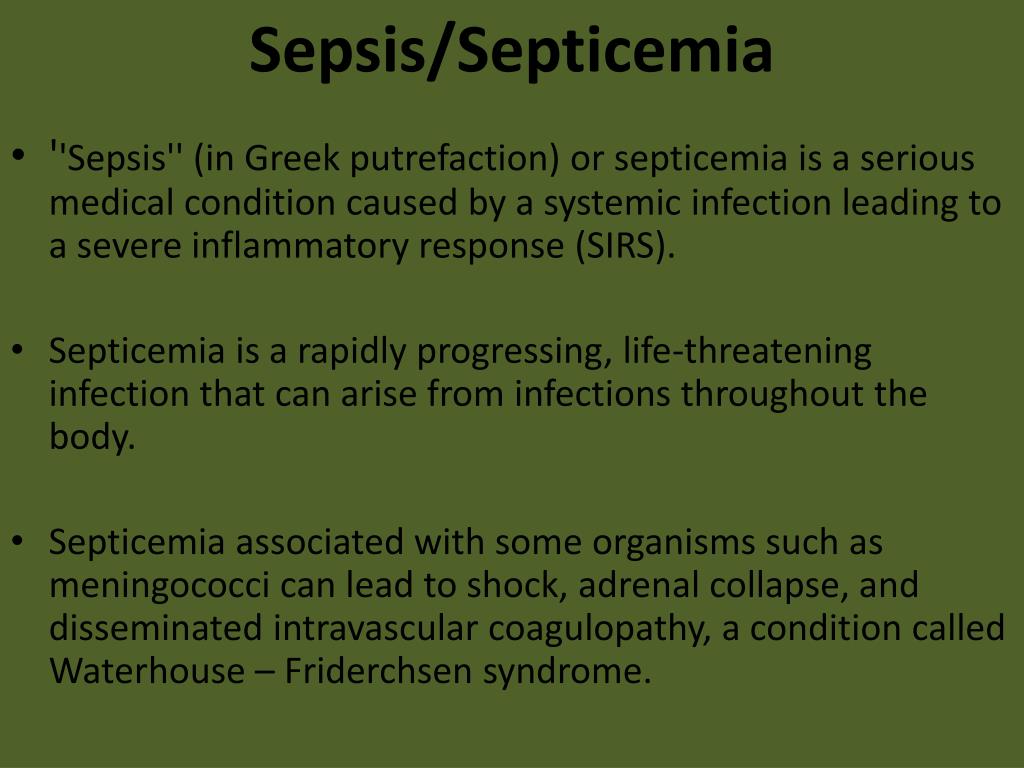
Severe sepsis is a common but deadly condition. It is usually caused by a bacterial infection that sets off a body-wide inflammatory response. It can show up in a number of ways. A patient might appear in the ER with an altered body temperature — typically higher than 100.4° F (38° C) or lower than 96.8° F (38° C), rapid heartbeat, rapid breathing, or lab tests showing signs of an infection (lots of white blood cells) or unusually few white cells.
The leading cause of death in hospitals in the United States, severe sepsis is associated with an estimated in-hospital mortality risk between 25 and 30 percent. In the U.S. alone, more than 500,000 adult patients are admitted to hospitals every year with evidence of sepsis and organ dysfunction. Each year in the U.S. there are approximately 750,000 cases of severe sepsis, which result in 215,000 deaths.
Even more disturbing is the fact that the volume of patients presenting to hospitals with sepsis appears to be increasing, making it increasingly difficult for doctors to quickly identify these patients and determine how severe their sepsis is.
Some relatively new techniques have shown a lot of promise in the treatment of severe sepsis. For example, Early Goal Directed Therapy (EGDT), which involves intense monitoring of oxygen delivery to the patient, can resuscitate patients and reduce the risk of mortality in people with dysfunctions of the heart or other organs. The benefit of these newer methods decreases, however, if there is any delay in beginning them, which makes it essential for doctors to determine which patients are at the highest risk and for patients and families to be alert to the symptoms.
WHY IS SEPSIS SO DANGEROUS?
A person can develop sepsis when the body — in particular, the bloodstream — is overwhelmed with bacteria. The infection can begin anywhere in the body, but common places are the intestines, kidneys, lungs (as in pneumonia), or the linings around the brain (as in meningitis).
If a patient is hospitalized for any reason, sepsis can develop from an IV line or at a surgical incision if he or she has had surgery.
Symptoms of severe infection typically include chills, fever, confusion, rash, and shaking. The most dangerous symptom of sepsis is a rapid drop in blood pressure, which can cause a patient to go into shock, which is life-threatening since the organs, including the brain, are deprived of oxygen. Treatment involves giving antibiotics through an IV, and administering fluids, oxygen, and medications to bring blood pressure back up. Sometimes a breathing machine or dialysis may be needed if the lungs or kidneys are affected.
DETERMINING A PERSON’S RISK EARLY ON SAVES TIME, MONEY, AND LIVES
Because of the seriousness of sepsis and the possibility of shock, it is critical for doctors to determine each patient’s risk level, so that he or she may be treated quickly and appropriately. More than 50 percent of patients with severe sepsis receive some part of their care in an intensive care unit (ICU), and sepsis is the most common cause of ICU admissions (other than surgery) in the U.S.
Treating severe sepsis contributes significantly to the overcrowding of ICUs, and adds to the more than $16 billion annual cost of caring for this syndrome in the U.S. As our population ages, the number of severe sepsis cases will inevitably increase. Accurate methods to determine a person’s risk could focus our limited health care dollars on seriously ill patients who are most likely to benefit, and at the same time decrease the use of invasive procedures on patients who have lower risk. Here, we’ll outline some of the newer techniques that doctors use to figure out who’s at greater risk for sepsis and who is not.
Organ Dysfunction
Sepsis can affect one or many organs of the body, depending on the extent of the infection. Doctors determine whether organs are failing using basic clinical evidence that is fairly clear-cut, and doing so can tell them who is at risk for death in the short term. However, patients with severe sepsis can range from having several failing organs to more mild organ “malfunctions.” Therefore, there are limits to what organ function — or organ failing — can tell us about the health status of the patient in question. For this reason, doctors have to use additional techniques that help them flesh out the picture when a patient develops sepsis.
Tests, Tests, and More Tests
There are a number of tests, some newer than others that are used to determine whether sepsis is present and, if it is, the degree to which it is present.
The Acute Physiology and Chronic Health Evaluation (APACHE) tests were the earliest ways to determine risk for septic patients in the ICU. But they are complex, and can often require information that’s not typically available early on in treatment such as data on the oxygen pressure in arterial blood. The Mortality in Emergency Department Sepsis (MEDS) score is used for adult patients who come into the emergency department with a suspected infection. This tool was developed specifically for determining risk quickly, using basic factors, which makes it very useful for measuring risk in the early stages and in many different types of patients. Unfortunately, its accuracy is not always so high in patients with severe sepsis, so it may need to be used with other tests.
Other methods, like the Rapid Emergency Medicine (REMS) and the Confusion Urea Nitrogen Respiratory Rate Blood Pressure Age over 65 (CURB-65) can be used in adult patients with a suspected infection, but again, their use in people with severe sepsis is not so well indicated. One test that can work well in severe sepsis is the Sequential Organ Failure Assessment (SOFA), which measures the degree of organ dysfunction and can predict whether critically ill patients will respond to treatment.
Finally, for patients with suspected sepsis, we now have the Predisposition, Infection, Response, Organ (PIRO) Dysfunction Staging System. This method uses several factors of the patient’s presentation such as history of chronic liver disease or heart failure, combined with his or her inflammatory response, and can be measured in both ICUs and ERs. All of these methods have their benefits, but PIRO is one of the most useful ways to determine one’s risk, especially in non-ICU settings, where doctors may not have access to a wide variety of lab tests and diagnostic equipment.
BLOOD MARKERS CAN PREDICT RISK, BUT SHOULD BE COMBINED
The level of lactic acid (or lactate) in the blood is well known to predict mortality in people who have sepsis. Lactate is produced when the body breaks down carbohydrates: most people are aware of it as being higher after strenuous exercise.
But lactate can also be present in high levels during infection, which makes it helpful in evaluating sepsis. High lactate in the body can signal to doctors that the EGDT measure should be used to optimize oxygen levels in the blood. One big benefit of using lactate levels to determine mortality risk is that it can help evaluate sepsis regardless of whether the organs are in good or bad shape. Doctors will often take a series of lactate tests to improve their accuracy: depending on how lactate levels behave, they can tell whether mortality risk is getting higher or lower. The drawback of using lactate levels to determine mortality risk is that lactate can be elevated for different reasons — and complicating this is the fact that sometimes people with severe sepsis can have normal lactate levels. Therefore, using these tests in conjunction with others (for example, of inflammatory biomarkers in the blood) can be extremely helpful to clinicians.
Using Biomarkers to Predict Risk: Interleukin-6 and Procalcitonin
When the body is under attack by an invader (bacteria or virus), the immune system kicks into high gear. One of the molecules that helps regulate the immune response is interleukin-6 (IL6), and is at its highest levels just two hours after infection sets in. For this reason, IL6 levels can be helpful in predicting mortality risk when people have sepsis, especially over time, rather than early on. However, since IL6 levels aren’t always available in labs, its use can be limited.
Procalcitonin is another molecule that can help predict mortality from sepsis. It, too, rises when the body is under attack by a pathogen, often a bacterium. It is so good at predicting the presence of infection that it generally outperforms other inflammatory biomarkers. It can be helpful in predicting mortality risk in a many different types of cases, and both in the ICU and ER.
COMBINING METHODS AND GETTING CLOSER TO THE GOAL
There is good evidence that using a combination of tests is the most effective way to predict the severity of sepsis, and its associated risk of death. Lactate has its benefits and drawbacks, as discussed, as do inflammatory biomarkers in the blood. For these reasons, using lactate levels alongside inflammatory biomarker tests increases their accuracy considerably. The more information doctors can gather about what is going on inside the body, by using a range of techniques, the better equipped they’ll be to make a diagnosis and determine the best course of treatment.
Severe sepsis is a common but deadly condition that carries with it a serious risk of mortality. Identifying the condition early is key. Quick identification and treatment can significantly decrease the death risk for sepsis patients. There are many methods that doctors use to identify patients with sepsis and determine how severe it is, and they all have their benefits and drawbacks. The most powerful methods involve the combination of different tests — for example, checking lactate levels alongside inflammatory biomarkers — in order to boost their predictive power.
Of course, preventing sepsis from developing in the first place is best by maintaining rigorous hygiene after surgery and monitoring wounds, for example. But barring this, sepsis should be treated quickly and accurately. Given the fact that so many people suffer from sepsis each year, developing better, stronger methods to evaluate its presence and severity will be a continuing goal in research.
Image: invisioner/Shutterstock.
This article originally appeared on TheDoctorWillSeeYouNow.com, an Atlantic partner site.
Sepsis – Reeve Foundation
What is sepsis?
Sepsis – also referred to as blood poisoning or systemic inflammatory response syndrome (SIRS) – is a life threatening condition that arises when the body’s response to an infection injures its own tissues and organs This condition leads to shock, multiple organ failure and death, especially if not recognized early and treated promptly.
In individuals with paralysis, this might begin as a urinary tract (bladder) infection, pneumonia, a wound, pressure ulcer or other infection. If the infection is not controlled locally, it can spread throughout the body.
Septic shock is severe sepsis with a drop in blood pressure leading to organ failure. Both sepsis and septic shock are life threatening. Treatment is most successful within the first hour of onset.
Anyone with an infection must be aware of the risks and symptoms of sepsis and seek medical attention immediately.
General symptoms of sepsis
Some or all of the following symptoms may be present:
- Infection
- Elevated temperature, greater than 38.30C or 101.30F
- Fast heart rate, greater than 90 beats per minute
- Fast respiratory rate, greater than 20 breaths per minute
Other symptoms that may be present:
- Confusion or coma
- Edema especially in the extremities, neck, face
- Elevated blood sugar without diabetes
- Lower temperature below 36C or 97F
Diagnosis of sepsis might include components of these variables:
- Inflammation at the site of the initial infection or anywhere in the body
- Inability to maintain internal blood pressure to ensure that enough oxygen-carrying blood reaches all vital organs
- Tissue perfusion, lack of oxygen to any part of the body, most readily seen in the fingers/arms, toes/legs
Sepsis is diagnosed when there is an infection somewhere in the body AND one of the following:
- Organ dysfunction (organ failure)
- Hypoxemia (inability to circulate oxygen to your tissues)
- Oliguria (decreased urine output)
- Lactic acidosis (drop in blood oxygen)
- Elevated liver enzymes (liver dysfunction)
- Altered cerebral function (confusion/coma)
What to do
Prevention is the best course of action to avoid the development of sepsis.
Individuals should check with their healthcare provider for any infection that is not improving or seems to be increasing in symptoms such as redness, swelling, discomfort, pain, localized heat over the affected area or fever/chills.
If you have an infection and experience any symptoms of these symptoms or body reactions, call or visit your healthcare provider immediately.
Diagnosing sepsis: lab and imaging tests
Typical laboratory and imaging tests for infection are:
- Urine test for bacteria
- Wound cultures for bacteria
- Nasal or oral secretions for bacteria
- Blood tests for bacteria, clotting factors, cardiac, liver and kidney function, oxygenation or electrolytes
- Body scans might be done to assess internal organ function. These scans might include:
- X-rays
- CT scans (Computerized tomography)
- Ultrasound
- MRI (Magnetic resonance imaging)
Treatment
Treatment is provided by experts in a hospital setting which includes supporting bodily functions along with antibiotics to control the spreading of infection.
- Antibiotics are provided to control the infection.
- Typically, individuals with sepsis or septic shock will receive IV fluid therapy and oxygen.
- Medications are provided according to the individual’s symptoms such as:
- Medication to control blood pressure and pain
- Insulin for high blood glucose
- Corticosteroids to decrease inflammation
- Therapy is indicated for supportive care to maintain and restore function.
- If the respiratory system is affected, mechanical ventilation may be required.
- If kidney failure is present, dialysis may be required.
Recovery
Recovery from sepsis is possible. Many individuals recover without any residual dysfunction. Some sepsis survivors will have long-term recovery needs based on organ or tissue damage from the septic event.
If there is severe trauma to the extremities, amputation may be performed. Some patients have post-traumatic stress syndrome – a mental health condition – as a result of trauma from the sepsis event.
Download a life-saving sepsis wallet card
The good news is, if you know the signs, and are quick to contact your physician when they set in, sepsis is treatable.
In order to help you be as aware as possible about sepsis, and to help your doctor to understand your susceptibility to the condition, the Reeve Foundation Paralysis Resource Center (PRC) offers a convenient and life-saving wallet card to draw immediate attention to sepsis.
Thanks to the collaboration of Linda Schultz, PhD, assistant professor of nursing at Maryville University, and the medical staff at Kennedy Krieger Institute, the sepsis wallet card was designed for both the patient and the physician, and applies to both adults and children.
Easy to fit in your wallet, the card is a tri-fold that will allow you to record your level of injury and include emergency numbers, review symptoms of sepsis, among other important information.
One of the folds is written specifically for the physician. In the event of a sepsis crisis, you can pull the “Attention Physician” flap to the front. This allows first responders to see your personal information on one side, and directions to treat sepsis on the other.
Copies of the sepsis wallet cards are available online for download, or you can get your laminated copy by calling the PRC at 800-539-7309 and asking to speak to an information specialist.
Watch our video on sepsis
Resources on sepsis
For more information on understanding sepsis and additional resources from trusted Reeve Foundation sources, please download our fact sheet on sepsis and check out our repository of fact sheets on hundreds of topics ranging from aging with a spinal cord injury to secondary complications of paralysis.
The information contained in this card and web page is presented for the purpose of informing you about paralysis and its effects. Nothing contained herein is to be construed or intended as a medical diagnosis or treatment. Contact your physician or other qualified healthcare provider should you have questions on your health, treatment, or diagnosis.
90,000 International guidelines for the treatment of sepsis and septic shock (2016)
The III International Consensus for the Definition of Sepsis and Septic Shock (Sepsis-3) was
adopted in 2016 by the Society of Critical Care Medicine and
European Society of Intensive Care Medicine.
The guidelines published in this article are intended to provide guidance to clinicians on
care and treatment of patients with sepsis and / or septic shock.They represent a revision
previously created Surviving Sepsis recommendations
Campaign (SSC) in 2012 on the management of severe sepsis and septic shock.
Introduction
Sepsis and septic shock are a major health problem. Annually, all over
the world, it is the cause of death of more than a million people, while the frequency of deaths
accounts for about one case in four.
Definition
- Sepsis is a life-threatening organ dysfunction caused by the body’s response
host for infection. - Septic shock is a type of sepsis that is accompanied by severe
hemodynamic, cellular and metabolic disorders with a higher risk
development of a lethal outcome.
Key recommendations
A. Initial therapy for sepsis
- Sepsis and septic shock are medical emergencies, therefore,
initial therapy and resuscitation should be started immediately! (best
practical recommendation – BPS). - Patients with hypoperfusion, during the first 3 hours of resuscitation, should
receive at least 30 ml / kg intravenous crystalloid solutions (strong recommendation,
low quality of evidence). - Subsequent adjunctive fluid therapy is adjusted based on frequent data
reassessment of hemodynamics (best practice recommendation
– BPS). - Further evaluation of the patient’s hemodynamics is recommended (for example, assessment of cardiovascular
– vascular system) to determine the type of shock, in the case when the clinical picture
does not lead to a clear diagnosis (best practice recommendation
– BPS). - In patients with signs of septic shock who require the appointment of vasopressors,
baseline target mean arterial pressure (BP) should be 65 mm Hg.Art. (strong
recommendation, moderate quality of evidence). - Dynamic parameters of hemodynamics, in contrast to static ones, can be used in
as a predictor of response to fluid therapy, where possible (weak
recommendation , low quality of evidence ). - Resuscitation measures should also be aimed at normalizing lactate levels in
patients with sepsis / septic shock as the main marker of tissue hypoperfusion (weak
recommendation , low quality of evidence ).
B. Screening and quality improvement of sepsis
- It is recommended to create a program to improve the quality of care in hospitals
care for sepsis, which would include screening for patients with severe diseases and
in patients with a high risk group (best practice recommendation – BPS).
S.Sepsis Diagnosis
- Samples of microbiological cultures (including blood) must be obtained before starting
antibiotic treatment in patients with suspected sepsis / septic shock; therein
if this does not significantly postpone the start of antimicrobial therapy (the best
practical recommendation – BPS).
D.Antibacterial therapy
- Intravenous antimicrobial use should be started immediately after
identification of the pathogen and / or within 1 hour after the onset of the first symptoms of sepsis
/ septic shock (strong recommendation, moderate quality of evidence, assessment
applies to both conditions). - Empiric antimicrobial therapy is recommended in patients with sepsis / septic shock,
comprising at least two classes of broad-spectrum antibiotics for the purpose of
exposure to a wider range of microorganisms or a suspected pathogen, including
bacteria, potential fungi and viruses (strong recommendation, moderate quality
evidence ). - Correction, in the form of a narrowing of empiric antibiotic therapy, should be made in the case of
identification of the pathogen and its sensitivity and / or in case of clinical improvement
(best practice recommendation is BPS). - Prophylactic administration of antibacterial drugs is not recommended in patients with
severe inflammatory diseases of non-infectious origin (severe pancreatitis,
thermal burns of the skin, etc. (best practice recommendation is BPS). - Antimicrobial dosing strategy should be based on generally accepted
pharmacokinetic / pharmacodynamic principles, as well as taking into account the functions of organs and
some features of antibacterial drugs in patients with sepsis or septic
shock (best practice recommendation – BPS). - In case of septic shock, initial empiric antibiotic combination therapy
(using at least two antibiotics of different classes) should be targeted
for a more likely spectrum of pathogens (weak recommendation , low quality
evidence ). - Combined
antibiotic therapy for neutropenic fever / bacteremia (strong recommendation,
moderate quality of evidence ). - It is not recommended to use combination antibiotic therapy for permanent
treating most other serious infections, including bacteremia and sepsis without signs
shock (weak recommendation, low quality of evidence). - Combination antibiotic therapy is not recommended for routine
treatment of neutropenic fever / bacteremia (strong recommendation , moderate
quality of evidence ). - In the case where the combined treatment was initially used to treat septic shock
antimicrobial therapy, it is recommended to de-escalate or discontinue it during the first
several days in response to clinical improvement and / or evidence of resolution of the infection.
This applies to both etiotropic (positive culture of the pathogen) and empirical
(in the case of a negative bacteriological test) antibiotic therapy (the best
practical recommendation – BPS). - Adequate duration of antibiotic therapy for most infections associated with
sepsis / septic shock is 7 – 10 days (weak recommendation ,
low quality of evidence ). - Longer use of antibacterial drugs may be justified in patients with
slow clinical response to therapy; bacteremia due to S taphylococcus
aureus ; some fungal and viral infections, as well as in patients with
neutropenia (weak recommendation, low quality of evidence). - In a certain category of patients, shorter courses of antibiotic therapy are possible, to
for example, in patients with a rapid clinical response, as well as after adequate sanitation of the source
infections in the case of abdominal / urinary sepsis or uncomplicated pyelonephritis (mild
recommendation , low quality of evidence ). - Daily assessment of the possibility of de-escalation of antimicrobial therapy in patients with
sepsis / septic shock (best practice guidelines – BPS). - Procalcitonin levels can be used to estimate the duration of antimicrobial
therapy in patients with sepsis (weak recommendation, low quality
evidence). - Procalcitonin levels can be used as a predictor of empirical withdrawal.
antibiotic therapy in patients who initially had symptoms of sepsis, but data
no localized infection was found (weak recommendation , low
quality of evidence ).
E. Remediation of the source of infection
- It is recommended that patients with sepsis / septic shock be identified and sanitized
specific anatomical source of infection and that all necessary sanitation measures
of this source were undertaken as soon as the diagnosis was established (the best
practical advice – BPS). - Immediate removal of any intravascular device that may serve as a
a possible cause of sepsis / septic shock, but only after another device
(best practice guidelines – BPS) will be installed.
F. Infusion therapy
- It is recommended that fluid therapy be used as long as there is
necessity from the point of view of the main parameters of hemodynamics, and their improvement in dynamics
(best practice guidelines – BPS). - As the choice of fluid therapy, preference should be given to crystalloid solutions
both at the initial stage of sepsis / septic shock therapy, and in the future, for
replenishment of intravascular fluid volume (strong recommendation , moderate
quality of evidence ). - It is possible to use other balanced solutions of crystalloids or physiological
solution as infusion therapy in patients with sepsis / septic shock (weak
recommendation, low quality of evidence). - Authorized to use albumin as the main addition to crystalloid solutions
at the stage of infusion therapy in patients with sepsis / septic shock to replace
volume of intravascular fluid, especially when patients need
significant amount of crystalloids (weak recommendation , low quality
evidence ). - It is not recommended to use hydroxyethyl starch (HES) for volume replacement
intravascular fluid in patients with sepsis / septic shock (strong
recommendation, high quality evidence). - Preferentially crystalloid solutions should be used as compared to gelatin in
infusion therapy for sepsis / septic shock (weak recommendation , low
quality of evidence ).
G. Vasoactive drugs
- Norepinephrine is the first-line vasopressor of choice (strong
recommendation , moderate quality of evidence ). - May be added as vasopressin (up to 0.03 U / min) (weak recommendation, moderate
quality of evidence) and epinephrine (weak recommendation, low quality
evidence) to norepinephrine in order to increase the mean arterial pressure to
target level, as well as adding vasopressin (up to 0.03 U / min) (weak recommendation,
moderate quality of evidence) to reduce the dose of norepinephrine. - As an alternative to norepinephrine only in a certain category of patients (for example, in
patients with a low risk of tachyarrhythmia and absolute / relative bradycardia) as
vasopressor drug, dopamine may be recommended (weak recommendation, low
quality of evidence). - It is not recommended to use low doses of dopamine to preserve kidney function (strong
recommendation, high quality evidence). - The use of dobutamine is recommended when, despite adequate infusion
therapy and use of vasopressor drugs, persistent tissue hypoperfusion remains
(weak recommendation, low quality of evidence). - All patients requiring vasopressor therapy should have arterial access
(catheter) as soon as possible and with the availability of resources (weak
recommendation , very low quality of evidence ).
N. Corticosteroids
- In patients with septic shock, it is not recommended to use intravenous hydrocortisone, in
the case when an adequate water load is sufficient to stabilize hemodynamics and
vasopressor therapy. When, despite the measures taken, stabilization is not
possibly 200 mg / day hydrocortisone (weak recommendation,
low quality of evidence).
I. Components of blood
- In adult patients, blood transfusion of red blood cells (RBC) is recommended only in case of a decrease
hemoglobin level <70 g / l in the absence of other aggravating conditions, such as - myocardial ischemia, severe hypoxemia or acute blood loss (severe
recommendation, high quality evidence). - It is not recommended to use erythropoietin for the treatment of anemia associated with sepsis
(strong recommendation , moderate quality of evidence ). - The use of fresh frozen plasma (FFP) is not recommended for correcting deviations in
the blood coagulation system in the absence of bleeding or planned invasive
interventions (weak recommendation, very low quality of evidence). - Prophylactic platelet transfusion is indicated when platelet count is> 10,000 mm3
(10×109 / l) in the absence of obvious signs of bleeding or when their level is> 20,000
mm3 (20×109 / l) in patients with a high risk of bleeding. Higher level
platelets in the blood> 50,000 mm3 (50×109 / l) is acceptable with active
bleeding, surgery or invasive intervention (weak
recommendation , very low quality of evidence ).
J. Immunoglobulins
- The use of intravenous immunoglobulin is not recommended in patients with sepsis /
septic shock (weak recommendation , low quality of evidence ).
K. Hemosorption
- There are no recommendations for hemosorption.
L. Anticoagulants
- It is not recommended to use antithrombin in the treatment of sepsis / septic shock (strong
recommendation , moderate quality of evidence ). - There are no recommendations for the use of thrombomodulin or heparin in the treatment of sepsis / septic
shock.
M. Artificial lung ventilation (ALV)
- For acute respiratory distress syndrome (ARDS) induced by sepsis in adults
a target tidal volume of 6 ml / kg body weight (BW) is recommended versus
12 ml / kg MT (strong recommendation, high quality evidence). - In adults with severe sepsis-induced ARDS, an upper limit is recommended.
plateau pressure (30 cm H2O) compared to the higher plateau pressure (strong
recommendation, moderate quality of evidence). - It is recommended to use high positive end expiratory pressure (PEEP) compared to
with low positive end expiratory pressure (PEEP) in adults with moderate to severe ARDS,
sepsis-induced (weak recommendation, moderate quality of evidence). - In adult patients, it is recommended to use the “alveolar opening maneuver” with
severe sepsis ARDS (weak recommendation, moderate quality
evidence). - For patients with severe sepsis-induced ARDS, the best position is
compared with supine position and a PaO2 / FIO2 ratio <150 mm Hg. (strong
recommendation , moderate quality of evidence ). - High-frequency ventilation is not recommended in adults with sepsis-induced ARDS (strong
recommendation , moderate quality of evidence ). - There are no recommendations for the use of non-invasive mechanical ventilation in adult patients with ARDS caused by
sepsis. - Use of muscle relaxants (NMBAs) recommended for ≤ 48 hours in adult patients
with sepsis-induced ARDS and a PaO2 / FIO2 ratio <150 mm Hg. (weak
recommendation, moderate quality of evidence). - It is recommended to prescribe conservative fluid therapy in patients with established
diagnosed with sepsis-induced ARDS without evidence of tissue hypoperfusion (severe
recommendation , moderate quality of evidence ). - The use of ß2-agonists in the treatment of sepsis-induced ARDS is not recommended when
no symptoms of bronchospasm (strong recommendation , moderate quality
evidence ). - In routine practice, it is not recommended to insert a catheter into the pulmonary artery in patients with
Sepsis-associated ARDS (strong recommendation, high-quality evidence). - It is recommended to use a low tidal volume versus a high tidal volume in patients with
respiratory failure due to sepsis, but no symptoms ARDS (mild
recommendation, low quality of evidence). - For the prevention of aspiration, as well as to prevent the development of
ventilator-associated pneumonia in ventilated patients the recommended position
lying with the raised head end from 30 to 45 degrees (strong recommendation ,
low quality of evidence ). - Spontaneous breathing training is recommended for patients with sepsis who are on
Mechanical ventilation, but who are ready to wean from it (strong recommendation , high
quality of evidence ). - It is recommended to use the ventilator weaning protocol in patients with respiratory
deficiency caused by sepsis who are ready for weaning (severe
recommendation , moderate quality of evidence ).
N. Sedation and Analgesia
- In patients with sepsis on mechanical ventilation, it is recommended to minimize prolonged or
intermittent sedation targeting specific titration points (best practice
recommendation – BPS).
O. Glucose Control
- In the intensive care unit for patients with sepsis, it is recommended to use
a documented approach to control blood glucose levels, – in the case when glycemia with
twice performed analysis is> 10 mmol / L, it is recommended to start injections
insulin.This approach will keep the upper blood glucose level ≤ 10 mmol / L,
rather than upper blood glucose level ≤ 6.1 mmol / L (strong recommendation, high
quality of evidence ). - Glycemic control is recommended every 1 to 2 hours, while glucose and rate
insulin infusions will not be stable, then every 4 hours in patients receiving
insulin infusion (best practice recommendation – BPS). - Interpretation of capillary blood glucose should be performed with caution,
since such measurements may not accurately reflect the true level of glycemia, as in arterial
blood and plasma (best practice recommendation – BPS). - In the case when the patient has an arterial access (catheter) to determine the level
glucose, it is recommended to use arterial blood rather than capillary blood (weak
recommendation, low quality of evidence).
P. Renal replacement therapy
- In patients with sepsis and / or acute kidney injury, it can be used as
prolonged and intermittent renal replacement therapy (RRT) (weak
recommendation, moderate quality of evidence). - In patients with sepsis and unstable hemodynamics, to control fluid balance
it is recommended to use the methods of prolonged renal replacement therapy (weak
recommendation , very low quality of evidence ). - In patients with sepsis and / or acute kidney injury, in the case when, in addition to high
level of creatinine and oliguria, there are no other indications for dialysis, the use of substitution
renal therapy not recommended (weak recommendation , poor quality
evidence ).
Q.Bicarbonate Infusion
- The use of sodium bicarbonate is not recommended to improve hemodynamics or reduce
the need for vasopressors in patients with lactic acidosis, at pH ≥ 7.15, caused by
hypoperfusion (weak recommendation , moderate quality
evidence ).
R.Prevention of venous thromboembolism (VTE)
- For the prevention of venous thromboembolic complications (VTEC), it is recommended to use
both unfractionated heparins (UFH) and low molecular weight herparins (LMWH), with
provided that there are no contraindications to their use (strong recommendation, average
quality of evidence). - For the prevention of VTEC, the greatest preference is given to LMWH over UFH, provided
the absence of contraindications to the use of the first (strong recommendation, moderate
quality of evidence). - In situations where possible, it is recommended to combine VTEC prophylaxis with
mechanical (physical) (weak recommendation, low quality of evidence). - The use of mechanical prophylaxis of VTEC is recommended when medicinal
(pharmacological) contraindicated (weak recommendation, low quality
evidence).
S. Prevention of steroid ulcers
- Steroid ulcer prophylaxis is recommended for patients with sepsis / septic shock
with a high risk of gastrointestinal bleeding (severe
recommendation , low quality of evidence ). - For the prevention of steroid ulcers, it is recommended to use as proton pump antagonists
(PPIs) and h3 – histamine receptor antagonists (h3RAs) (weak
recommendation, low quality of evidence). - Prophylaxis of steroid ulcers is not recommended in the absence of risk factors
development of gastrointestinal bleeding (best practice recommendation
– BPS).
T. Power
- It is not recommended to use parenteral nutrition alone or in combination with
enteral in patients with sepsis / septic shock who can be fed enterally
(strong recommendation, moderate quality of evidence). - It is not recommended to use only one parenteral nutrition or its combination with
enteral (and as soon as possible start an intravenous glucose infusion and try to establish
enteral nutrition) during the first 7 days in severe patients with sepsis / septic
shock, for which previously enteral nutrition seems impossible (strong
recommendation, moderate quality of evidence). - It is recommended to start early enteral feeding rather than just intravenous glucose infusion at
severe patients with sepsis / septic shock who can be fed enterally (weak
recommendation, low quality of evidence). - Either early low calorie or early complete enteral nutrition is recommended.
in severe patients with sepsis / septic shock; if a low-calorie meal was
initially, then the nutrition should be changed in accordance with the patient’s tolerance (weak
recommendation, moderate quality of evidence ). - It is not recommended to use omega-3 fatty acids as an immune supplement in severe
patients with sepsis / septic shock (strong recommendation, low quality
evidence). - Routine measurement of gastric residual volume is not recommended in critically ill patients with
sepsis / septic shock (weak recommendation, low quality of evidence).
However, measurement of gastric residual volume in patients with malabsorption
or with a high risk of aspiration, allowed (weak recommendation, very low
quality of evidence) . Note: This recommendation applies to non-surgical
severe patients with sepsis / septic shock. - It is recommended to use prokinetics in severe patients with sepsis / septic shock and
for malabsorption (weak recommendation, low quality of evidence) . - It is recommended to insert an intastinal (post-pyloric) feeding tube in critically ill patients
with sepsis / septic shock with malabsorption or high risk of aspiration
(weak recommendation, low quality of evidence). - It is not recommended to use intravenous selenium in the treatment of sepsis and septic shock (strong
recommendation, moderate quality of evidence). - It is not recommended to use arginine in the treatment of sepsis and septic shock (weak
recommendation, low quality of evidence). - It is not recommended to use glutamine in the treatment of sepsis and septic shock (strong
recommendation, moderate quality of evidence). - There are no recommendations for the use of carnitine in the treatment of sepsis and septic shock.
Sources:
- Surviving Sepsis Campaign: International
Guidelines for Management of Sepsis and Septic Shock: 2016) http://journals.lww.com/ccmjournal/Fulltext/2017/03000/Surviving_Sepsis_Campaign___International.15.aspx
Material prepared by NOIMTOiR: Motalkina
Margarita Sergeevna – K.MD, Researcher NOIMTOiR,
Oncologist of the Department of Oncology, Hematology and Bone Marrow Transplantation.
Worse than cancer: invisible killer sepsis – BBC News Russian Service
- James Gallagher
- BBC Science Observer
Photo by PAtrick Kane
Signature photo,
Patrick Kane lost a leg, hand and fingers on the other hand as a result of sepsis in infancy
“I passed out seven times, and for a long time no one could understand if I would be able to get out at all,” says Patrick Kane.
The reason he was close to death was an acute illness that claims more lives each year than prostate, bowel and breast cancers combined.
He was only 9 months old when one day he became lethargic, weakened and practically stopped responding to the outside world.
The doctor prescribed a regular antipyretic, but Patrick’s mom still decided to take him to the hospital. On the way, his condition deteriorated sharply.
“It really came as a surprise… In the hospital, half of my internal organs simultaneously refused, “he says.
Patrick spent three and a half months in a hospital bed, his right leg was amputated up to the knee, left hand and fingers on the right.
Photo by PAtrick Kane
Photo caption,
Patrick in infancy
What happened to him is called sepsis, or, to use the common name, blood poisoning
He is now 19 years old and is studying biochemistry at the University of Edinburgh.”People have either come across someone who has had sepsis, or they just don’t know it happens,” says Patrick.
What is sepsis?
Sepsis occurs as a result of infection, but in fact it is a consequence of the fact that the immune system suddenly begins to experience severe overload.
It all starts with an infection that can be caused by anything – even a simple cut or insect bite.
Usually at this moment our immune system turns on and begins to fight infection and its spread.
But if the infection could spread quickly, the body’s defenses begin a massive attack.
It is this violent response of the body that can lead to catastrophic consequences: septic shock, failure of internal organs and even death.
In Britain every year more than 40 thousand people die from sepsis.
What are the symptoms?
The UK Sepsis Trust identifies six symptoms to watch out for:
- severe fever or joint pain
- prolonged urinary retention
- rapid breathing
- I feel like I’m dying ”
- the skin is stained or sallow
Symptoms in a child:
- is spotted, pale or bluish
- reactions are slowed down, cannot be woken up from a sleepy state
- unusually low temperature body
- rapid breathing
- rash that does not fade when pressed
- convulsions
Patrick says that there is no one “main symptom”, but you have to constantly ask yourself the question: “What if it is just sepsis?”
Photo author, Alamy
How to deal with it?
The British National Health Service is stepping up its efforts to combat sepsis, but action is still insufficient.
A 2015 report indicates that four out of ten emergency patients were not screened on time, or – in a third of cases – did not receive antibiotics on time.
According to Professor Gillian Leung, deputy head of the National Institute for Health and Medical Technology Excellence, “Recent studies of a number of case histories have revealed contradictions in how symptoms are assessed under different circumstances. Much remains to be done to ensure timely treatment.” …
The institute’s specialists insist that patients with signs of sepsis be treated within an hour. It used to be thought that doctors should treat sepsis in the same way as the threat of a heart attack.
British Minister of Health Jeremy Hunt assured that there is an ongoing campaign to raise public awareness.
antibacterial therapy – Dobrobut clinic
Sepsis – what kind of disease is it: diagnosis, treatment, prognosis
Sepsis – damage to the body by pathogenic microorganisms that have entered the bloodstream.It can be triggered by streptococci, staphylococci, pneumococci, E. coli and other bacteria, as well as viruses, fungi and protozoa. More often, sepsis is a complication of the inflammatory process (for example, wound). In the development of purulent sepsis, an important role is played by a decrease in immunity due to surgery, large blood loss, and a serious illness.
Any foci of infection in the body can serve as a source of infection. The cause of surgical sepsis is wound suppuration.
For the development of sepsis, a connection of the primary focus with blood or lymphatic vessels is required.The appearance of secondary septic foci is determined by the type of pathogen and the localization of the primary foci. The main cause of sepsis is systemic inflammatory response syndrome. This is the body’s reaction to the effects of several strong stimuli (trauma, surgery, etc.).
Symptoms of sepsis in adults
Sepsis – what is this disease? Pathology is manifested by a violation of the general condition of the body. Secondary foci of infection may also occur.
Symptoms of sepsis in adults:
- headache;
- confusion of consciousness;
- temperature rise to 39-40 degrees;
- tachycardia;
- decrease in blood pressure;
- progressive weight loss;
- thrombosis.
90,017 edema;
In severe sepsis and septic shock, there is a violation of the blood supply to certain organs and tissues. Septic shock is more common in children, the elderly, and immunocompromised people. Multiple organ failure in sepsis (it develops with damage to many organs – this is the so-called multiple organ sepsis) in 25–45% of cases is fatal.
The clinical course of the disease is fulminant (1-2 days), acute (up to 1 week), subacute (more than 1 week), chronic.With sepsis, there may be worn or atypical symptoms. With the development of sepsis in newborns, vomiting, diarrhea, rapid weight loss are observed, suppuration in the navel, abscesses and phlegmon of various localization may appear.
Complications of sepsis include: hemodynamic, respiratory, renal, neurological, cardiac disorders. Thrombocytopenia of unknown etiology is observed in 10-30% of patients with sepsis. Read more about the complications of this pathology on our website Dobrobut.com.
Diagnosis of sepsis is based on the analysis of symptoms and laboratory data (isolation of the pathogen and determination of its sensitivity to antibiotics, procalcitonin test, blood and urine tests).
Sepsis: clinical guidelines
Treatment of sepsis is carried out in intensive care units or in intensive care units. Rehabilitation of the focus of infection is necessary – for example, opening an abscess, removing pus and dead tissue in the area of inflammation.
Etiotropic therapy is carried out as early as possible.Before identifying the pathogen and determining its sensitivity to antibiotics, antibacterial drugs of a wide spectrum of action are prescribed. If the primary focus of infection is not established, take into account what kind of infection it is – community-acquired or hospital. In case of community-acquired infection, the drugs of choice are cephalosporins of the third and fourth generations, fluoroquinolones. For nosocomial infections, carbapenems are prescribed. Important: the administration of high doses of antibiotics for long courses is required in order to create the necessary concentration of the drug in the blood and in the foci of infection.
For sepsis, clinical guidelines for the treatment of patients with anaerobic infections are the use of metronidazole and antibiotics of the lincosamide group. With staphylococcal sepsis, anti-staphylococcal immunoglobulin is administered. Etiotropic treatment is carried out until the symptoms of infection disappear and a stable positive dynamics of the patient’s condition appears.
The primary measures for sepsis include infusion therapy. It helps to correct tissue perfusion and homeostasis, normalize cell metabolism, and reduce the concentration of toxic metabolites.
In case of emergency conditions arising from sepsis, additional measures may be required:
- artificial lung ventilation;
- hormone therapy;
- therapy for acute renal failure;
- blood glucose control;
- maintenance of cardiac activity;
- prevention of deep vein thrombosis.
Neonatal sepsis
In newborns, sepsis develops against the background of intrauterine infection.The entrance gate is usually the umbilical wound. It is possible that the infection can penetrate through the respiratory system, hearing, skin, and gastrointestinal tract. Allocate lightning-fast (1-7 days), acute (1-2 months) and protracted (more than two months) sepsis.
Treatment of sepsis in newborns is aimed at suppressing the pathogen, sanitizing purulent foci, increasing the body’s defenses. Antibiotic therapy is carried out taking into account the sensitivity of the pathogen to the antibiotic, the maximum age-related doses are prescribed for 3-4 weeks.If the sensitivity of the pathogen to antibiotics is not determined, therapy is carried out with broad-spectrum antibiotics. To prevent the development of dysbiosis, probiotics are prescribed.
Also carry out:
- detoxification therapy;
- immunocorrection;
- correction of acid-base balance;
- anti-shock therapy;
- restoration of water and electrolyte balance.
The prognosis after neonatal sepsis depends on the general condition of the child.The risk of death in premature infants with low birth weight is 2-4 times higher. The overall mortality rate in the early development of sepsis is from 3 to 40%. Mortality from late-onset sepsis depends on the etiology of the infection.
Rapid sepsis test | Scientific discoveries and technical innovations from Germany | DW
Although sepsis is infrequent in statistics reflecting the cause of death, this is due to the imperfection of the accounting system, and not at all with the harmlessness of the disease or the fact that it is allegedly rarely recorded.In fact, sepsis in Germany alone claims an average of 162 lives per day, so if the list of causes of death were not limited to major diseases, sepsis would rank third, only marginally behind myocardial infarction. This pathology, better known in everyday life as “blood poisoning”, in fact, is an inflammation that has engulfed the entire body. Such a systemic inflammatory reaction is a response to the ingestion of a purulent infection from a local focus of inflammation into the bloodstream.
Personal experience of Dr. Kingsmore
The main difficulty in treating sepsis is that its most severe forms require the most urgent measures, while diagnosis is associated with a number of difficulties. Stephen Kingsmore, a prominent American physician and director of the Center for Genomic Pediatrics at Children’s Mercy Hospital in Kansas City, Missouri, experienced this himself: “At the age of 40, I had to be operated on. I injured my back while skiing – says the scientist.- Three days after the operation, my temperature suddenly jumped, my pulse increased sharply, and my head ached terribly. It was sepsis. “
Stephen Kingsmore spent a whole month in a hospital bed then. And it took him another three months to fully recover.” My personal experience shows that doctors are even very good doctors! – have certain difficulties with early diagnosis of sepsis, “the pediatrician complains.
” Golden hour “of a patient with sepsis
he himself has sepsis, but also the problems that the staff of the admission department of the hospital where he works constantly face.Among the patients admitted there, almost every day there are those who develop sepsis, and the question arises before the doctors: what course will the disease take? If one can be safely sent home, provided with an antibiotic for oral administration, and everything will be fine, then the other should be immediately hospitalized in the intensive care unit, otherwise he will face multiple organ damage with the development of heart, respiratory, and renal failure.
There is very little time to make the right decision, says Kingsmore: “Doctors have the term ‘golden hour’ – this is the period of time at the very beginning of the development of severe sepsis, when the patient can still be saved.If the “golden hour” is missed, the forecast is disappointing. But the trouble is that doctors cannot immediately recognize which patient will become very ill very quickly, and which one can simply be given an antibiotic and let go home with a clear conscience. “
The main difference is in catabolism
Together with colleagues from At the National Center for Genomic Resources in Santa Fe, New Mexico, Stephen Kingsmore took on the development of a rapid test for sepsis that would predict the future course of the disease from a patient’s blood sample.Researchers studied blood samples from many hundreds of patients who were admitted to the emergency room with sepsis at the earliest stage, and followed their further fate for a month. Some more or less easily coped with the disease, others, unfortunately, did not. Stephen Kingsmore says: “We found a clear correlation between the blood composition of patients and the course of sepsis. Between those who survived and those who died, the main difference is in catabolism, that is, in energy metabolism. And traces of this difference are easily found in the blood.” …
Seven main markers
It turned out that the surviving patients could quickly mobilize the fat reserves of their bodies for energy, and the dead patients did not have this ability, as if they initially lacked energy to survive. Accordingly, completely different metabolites were present in their blood at different concentrations. Researchers have identified seven major markers from these components that could form the basis of a clinical test. While such a test is quite laborious, but in the future, researchers expect that they will be able to create a rapid test.
“Today we need a mass spectrometer to analyze these seven markers in detail,” says Stephen Kingsmore. “However, we hope to greatly simplify this process over time. Ideally, it should not be different from how diabetics control blood sugar today. : one injection in a finger, a drop of blood – on a test strip, one – into a portable glucometer, and in a minute the result is ready. The rapid test for sepsis should function in the same way. ”
High-volume hemofiltration for sepsis | Cochrane
Relevance
Severe sepsis and septic shock are among the most common causes of death in adult patients admitted to an intensive care unit (ICU).Sepsis often occurs after an infection, in response to which the body produces chemicals that cause massive inflammation throughout the body. This inflammation can lead to dysfunction of internal organs, such as the kidneys, heart or lungs, and to poor circulation. Dysfunction and organ failure due to inflammation can lead to a high mortality rate associated with sepsis.
In theory, if it were possible to artificially neutralize or remove these chemicals from the bloodstream, it could improve patient outcomes (reduce the incidence of outcomes such as organ failure or death).High volume hemofiltration (HVHF) is one technique that can be used. Standard hemofiltration is already being used as a treatment in intensive care units to remove toxins that build up when a patient’s kidneys stop working. This procedure involves removing the patient’s blood through a large catheter (a hollow, flexible tube inserted into a large vein). After the blood is removed, it passes through a filter that purifies it of toxins. The “purified” blood is then returned to the patient through the catheter.HOCP, the more intense form of this treatment, aims to eliminate more toxins (including some of the toxic chemicals produced by sepsis). However, VOGF has several potential drawbacks. This specialized method requires special equipment and additional training. In theory, this technique could have harmful effects on a patient’s blood pressure, or it could remove beneficial chemicals (such as antibiotics). In this review, we assessed whether high-volume hemofiltration could improve outcomes, for example, reduce the risk of death in patients with severe sepsis.
Characteristics of research
This review is current as of December 2015. We included 4 clinical trials with 205 participants. All four studies evaluated the effects of HOBF versus existing standard hemofiltration and included participants with severe sepsis or septic shock admitted to an intensive care unit (ICU). Three of the four studies were very small (less than 20 participants in each study).The maximum time participants were followed up after enrollment in all studies was 28 days. Two studies received financial support from pharmaceutical companies and one study received support from a health research organization.
Main results
Outcome data were limited — two studies reported mortality rates at 28 days; the third study reported inpatient mortality rates; in the fourth study, the reported number of deaths did not match the estimated mortality rates.One study reported length of stay in the intensive care unit, and another reported data on organ dysfunction. The researchers did not describe any complications.
There is no clear evidence to support any benefit of HVOF in critically ill patients with severe sepsis or septic shock.
Quality of evidence
There is insufficient evidence to support the routine use of high-volume hemofiltration in patients with severe sepsis or septic shock.The studies included in this review had relatively small numbers of participants and assessed different outcomes; therefore, we rated the quality of the evidence regarding the effect of HVGF as low. Larger trials in multiple centers are needed to fully evaluate clinically relevant outcomes and estimate cost versus benefit.
It was possible to find out how sepsis develops – Science – Kommersant
Scientists have investigated how the amount of low molecular weight substances in the cell and in the blood changes during sepsis.It turned out that one of the fundamental mechanisms of the development of sepsis is a violation of the functional unity of the human body with the microcosm of bacteria. Microbes destroy amino acids, and the products (metabolites) of these destruction do not allow cells to produce energy, which leads to disruption of organs and further development of sepsis. The findings will help doctors better diagnose this dangerous systemic inflammation. The study was supported by the Russian Science Foundation.
When the body is weakened due to serious illness, infectious complications after trauma or surgery, sepsis often develops.This is a bacterial inflammation, which manifests itself in the disruption of the normal functioning of internal organs. According to estimates by the World Health Organization, it develops in more than 30 million people annually and is believed to kill 6 million people. Now scientists are looking for an answer to the question why, in sepsis, following disturbances in the work of one organ, the work of others – lungs, heart, brain, kidneys, liver – is quickly disrupted and immunity decreases. Because of this, the process becomes uncontrollable and begins to threaten the patient’s life.Earlier, the authors of the work found that during sepsis, phenolic metabolites accumulate in the blood of patients – products of the destruction of aromatic amino acids by microbes. The higher their concentration in the blood, the higher the risk of death. But for a long time it remained unclear exactly how bacterial metabolites can affect the functioning of organs.
Recently, scientists have linked organ dysfunction in sepsis with dysfunction of mitochondria, which play the role of energy stations of the cell. They can synthesize some proteins for themselves and are similar to bacteria.Therefore, one of the scientific hypotheses suggests that once in ancient times, mitochondria themselves could be bacteria. Sepsis causes a decrease in the production of energy by these organelles, which adversely affects the life of the cell. Disruption of mitochondrial function is usually explained by oxygen starvation, acidification and immune imbalance, but not by the influence of bacteria.
Russian scientists from the Laboratory of Metabolism in Critical Conditions of the Research Institute of General Reanimatology in their study compared the amount of phenolic bacterial metabolites as an indicator of sepsis and mitochondrial metabolites as an indicator of organelle dysfunction.Among the mitochondrial metabolites, the authors of the work paid special attention to itaconic acid as a possible marker of systemic inflammation.
Scientists received and analyzed 103 blood serum samples from patients with early and late sepsis and from healthy people. The results showed that the levels of microbial and mitochondrial metabolites in the blood of healthy people were consistently low. At the same time, in sepsis, the concentration of phenolic microbial metabolites in the blood was, on average, 30 times higher than without it, and increased in proportion to the severity of the condition.
Itaconic acid was found in the blood only at an early stage of sepsis, and the levels of other mitochondrial metabolites (for example, succinic acid) increased significantly already at a late stage, with the progression of organ dysfunctions and a poor prognosis. In a series of experiments with mitochondria in vitro (in vitro), scientists were able to find out that certain phenolic metabolites of bacteria, characteristic of sepsis, can interfere with the production of energy in cells by suppressing certain enzymes, for example, succinate dehydrogenase.This leads to organ dysfunction.
“We have shown that one of the fundamental mechanisms of the development of sepsis is a violation of the functional unity of the human body with the bacterial microcosm, and this occurs at the level of low molecular weight metabolites. In other words, we have begun to decipher the “ancient language of communication” of small molecules of microbial origin with eukaryotic cells. In the future, new knowledge can be used for targeted regulation of bacterial metabolism aimed at protecting and restoring mitochondrial function.In practical medicine, these studies will help develop a new strategy for antimicrobial therapy, new targets for extracorporeal, that is, extraorganismic, detoxification, as well as new diagnostic tests. Thanks to this, doctors will be able to save the lives of many difficult patients, ”commented the project manager Natalya Beloborodova, MD, head of the laboratory of metabolism in critical conditions of the N.I. VA Negovsky Federal Scientific and Clinical Center of Reanimatology and Rehabilitation (Moscow).
Based on materials from SerumLevelsofMitochondrialandMicrobialMetabolitesReflectMitochondrialDysfunctioninDifferentStagesofSepsis; NataliaBeloborodova, AlisaPautova, AleksandrSergeev, NadezhdaFedotcheva, Metabolites magazine, October 2019
The story of Masha Popova – Federal State Budgetary Institution “National Medical Research Center of Hematology” of the Ministry of Health of Russia
“Summer 2011 was really bright! And autumn promised to become even more eventful. So many events, and even more plans. Adventure has always been in my blood.
So in 2011, I was on vacation in the USA and spent my time extremely actively: I rode horses (trot and gallop in the compulsory program), swam the lake back and forth (naturally, racing), tried a boogie board (when the waves are higher than you – it’s very fun!), Played football, volleyball, tennis, bowling, mastered stilts (it worked out a little), walked through the beautiful American forests, dragged heavy equipment around the city (in the States, reasonable prices, and I have always been greedy for buying cameras , video cameras and tripods …) and practically did not sleep.Returning to Russia also promised a lot of adventures, I firmly decided to do acrobatics and jump with a parachute. However, life had other plans for me.
The fact is that football, horses, and a boogie-board – all activities were accompanied by a terrible headache, numbness of the limbs, severe bleeding of the gums and blackening huge bruises that appeared for no apparent reason. I remember good American citizens coming up to me on the street and asking if they needed help – social.“Are you sure your parents aren’t beating you? Are you okay, girl? ” I just smiled back. Am I okay? Everything is fine!
However, the appearance of bruises became more frequent, and the headache was depressing. In the morning I woke up on a pillow red with blood from my mouth. I started to get scared.
American doctors, having examined me, advised me to see a doctor again upon returning home. The fact that I was going to fly back only in two weeks was of little interest to them. But I couldn’t stand it. Two weeks seemed too long to me.I changed tickets and arrived in Moscow on September 20. It was my little sister’s birthday and we had a magical time with the whole family! I went to bed with a smile: I am at home, my parents are nearby, I fall asleep in my bed, now everything will definitely be fine!
However, in the morning I almost choked on my blood again. And my mother and I went to the Gemcenter on the Dynamo.
Don’t ask me why exactly there! My mother is a very smart woman, in her decision to take me to the State Research Center, female intuition, love for her daughter, rich life experience and accumulated knowledge merged together.True, I still did not understand that this gloomy old building would be my salvation, I generally planned on that fateful Monday to have time for classes at the institute.
After waiting a little in line, I went into the waiting room, showed the doctor my bruises and gums … and was awarded such a surprised and frightened look by the doctor that I was taken aback: it seemed to me that the doctors had already seen everything.
Further – as in a fog. They put me in the hospital, urgently. I’m trying to joke: is this contagious? No, this is very dangerous.I remember the first days in the hospital from the stories told by my parents. The organism, which had held on until that moment, finally could not stand it – I passed out. I only remember the constant headache and how the toes tensed when the veins were pierced with a needle: not once, not two, but dozens.
Later I found out my diagnosis. Almost by accident. Leukemia. What is it? Leukemia. Here, something more familiar … Leukemia all my life seemed to me the Scariest Thing in the world. It seemed that if you said this word out loud, you would die right away.
But no. I checked.
And one of your friends once asked: do you have cancer? I was confused, but it turned out that leukemia is really called cancer. Well, what can you do. Cancer means cancer. Leukemia. Acute promyelocytic leukemia. Now I can even pronounce it quickly and without hesitation.
By the way, I was not immediately diagnosed. While I was in a state close to coma, I was little interested in what I was ill with, but the doctors carefully examined my analyzes, trying to find out something.The fact that I am still alive only by a miracle, they found out right away. You know, in the blood of every person there are various elements responsible for one or another function of the body’s life. So, red blood cells carry oxygen through the blood. White blood cells are responsible for immunity and protection against infections. And platelets allow blood to clot. The lower limit of the normal platelet count in a healthy person is 180 units. At the time of my arrival at the Gemcenter, the level of leukocytes in my blood was … 5 units. Five! The eight-hour flight from the States was supposed to end with a cerebral hemorrhage for me, but the Lord kept me, and I physically felt it!
On the very first day, not knowing the diagnosis yet, the doctors “zhahnul” me with chemistry.In total, I underwent 4 courses of chemotherapy. I endured them unimportantly and unusually. For example, sepsis. Blood poisoning, in more understandable language. Usually, with sepsis, the organs are damaged symmetrically: the right hand hurts, which means the left one too. During my blood poisoning, only my left leg was swollen and throbbed with terrible pain. On the other hand, one on the left hurt so much that I started twitching when someone just approached the bed: what if he accidentally touched the headboard, the bed wobbled slightly, and I would faint from the pain?
Yes, I fainted.Generally a favorite pastime. Especially when the temperature is 41.5 … Mandatory program instead of trot and gallop!
I read “The Land of Crimson Clouds” by the Strugatsky brothers and was inspired by the courage of Soviet space pilots. Just like me, they struggled through pain and weakness, they wanted to eat, drink, sleep, but around them there was only the red-hot desert of Venus. And death. And I was sitting in a comfortable box with my mother, food, water. And there is only life ahead. What right did I have to whine? After all, my parents, relatives, friends and faith in the intercession of the Lord supported me.Frankly, it used to be so bad that I wanted to spit on everything and shout: yes, cancer, damn you, you won! However, I immediately pulled myself together, recalled the words of Voltaire, who said that everything is going for the best in this best of worlds – and tried to behave like Polianne from the book of the same name.
You can’t even imagine how many positive aspects can be found in the treatment of a serious illness. I am already silent about the banal “how cool to shave” (this goes without saying, especially for a girl with an ideal skull shape).I sat down to shave and already voluntarily exposed my skull after high-dose chemotherapy courses. In addition to a new image, I made a lot of precious and interesting friends in the hospital, who arranged real miracles for the girl who was closed in the four walls of boxing, who influenced my future life. Once again, I became convinced that my friends are the most sympathetic and selfless people in the Universe, and even more (but how much more?) I learned to appreciate and love strangers. I even managed to boost my self-esteem by lying like a dead fish without hair in a hospital bed! After all, let me boast a little, such bright personalities came to donate blood, such as, for example, the artist-director of the Cirque du Soleil performances Pavel Brun, the eminent traveler Fyodor Konyukhov, who alone crosses the oceans, the same fighter, actor and just a good person (and at the same time and the bell ringer in the Cathedral of Christ the Savior) Sergei Badyuk, members of the folklore ensemble “Zlatna Kapija”, and also the biker group “Steppenwolf” with all its members! How can I imagine that the blood of a steppe wolf flows in me now …
I am incredibly grateful to all donors who came to give me fresh blood to drink, the Give Life Foundation, which obtained rare and expensive antibiotics for me, which pulled me in the right direction when I was on the verge of death, and to all sympathizers who responded to my hospital adventures kind word.There, in the hospital, this word warmed and took care of me, along with medications, a positive mood and God’s intercession.
But, I think, no one will be offended if I say that I feel the most vivid gratitude towards my family: mom, dad and two sisters who, with disarming self-sacrifice, turned all their attention to, ahem, excuse me. And, of course, in relation to her attending physician, Inna Ivanovna Shaforostova, who literally saved my life, not only with her high skill, but also with sincere concern!
Now, in the spring of 2015, looking back, I have no regrets.
Tell me, how could I have gained this most valuable life experience if I hadn’t gotten sick with leukemia? The eventful summer gave way to the same amazing autumn and winter: a couple of crazy nights under the influence of narcotic painkillers (nothing helped with sepsis), four catheter insertions, several dozen punctures and trepanobiopsy (I really am not afraid of anything anymore), a hundred days and nights, frightening with suspense and pain, about five hundred injections into a vein (and at the age of seven I fainted when my vein was injected, that’s what a weakling I was) and thousands of pleasant acquaintances! And one very important realization: cancer is not so terrible as it is painted!
After achieving remission, I can again return to my bright, full-fledged life! Again horseback riding, swimming, heavy photography, football, volleyball, tennis and forest walks.

 This may involve getting oxygen and intravenous (IV) fluids.
This may involve getting oxygen and intravenous (IV) fluids.
